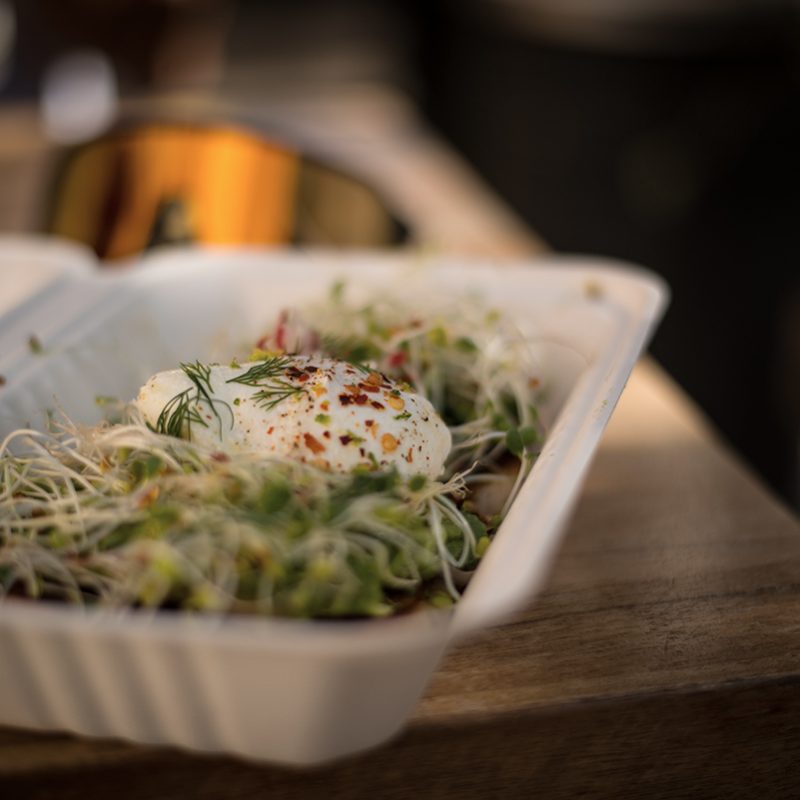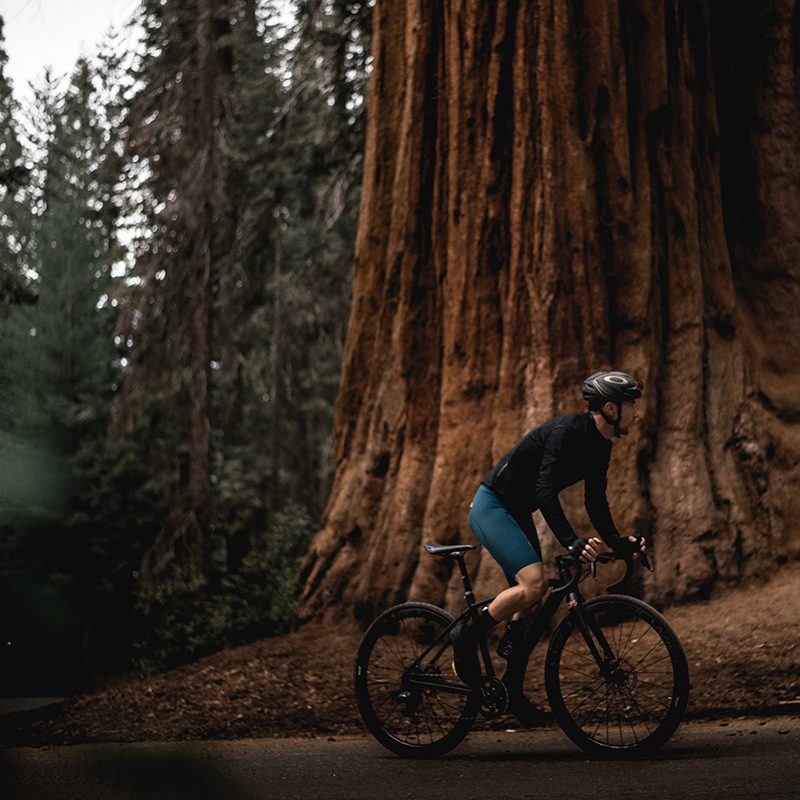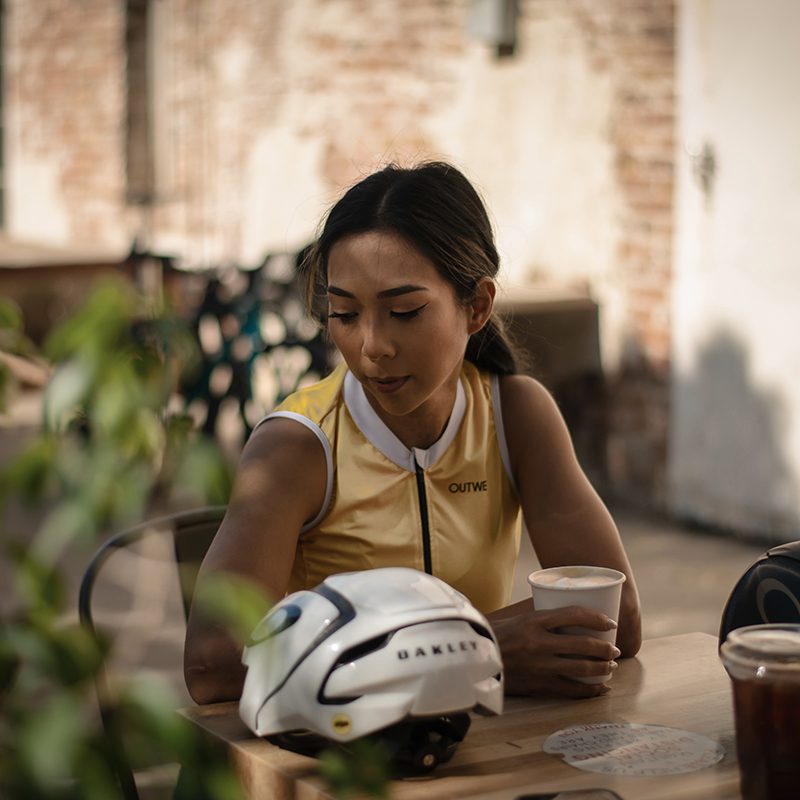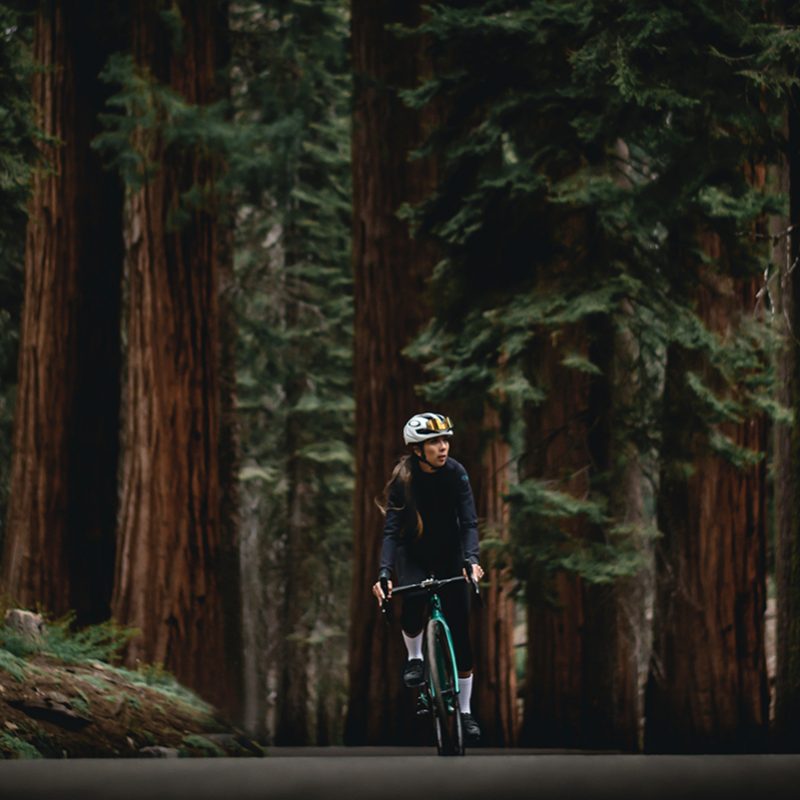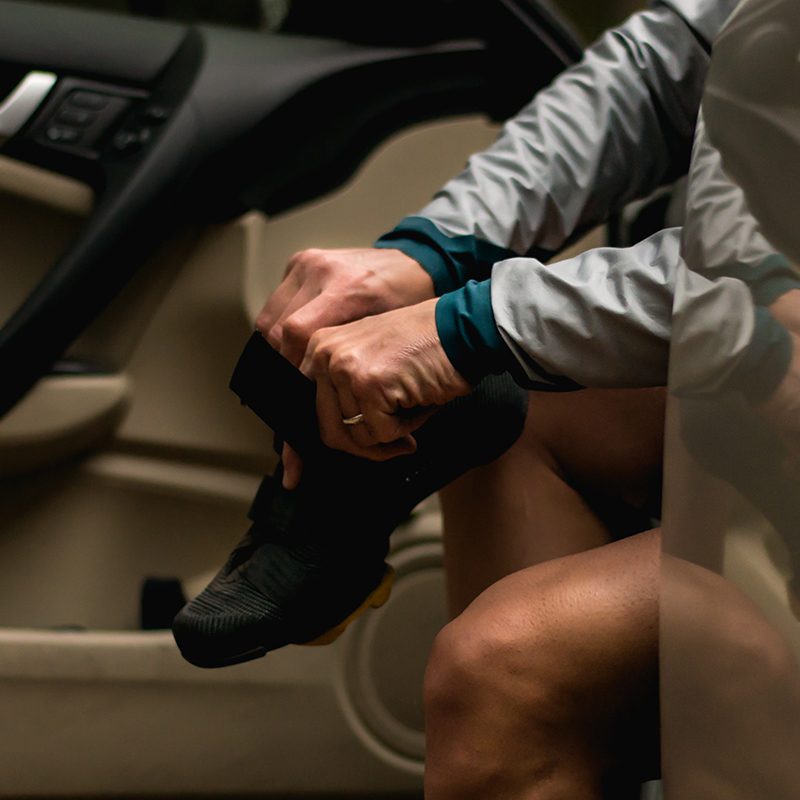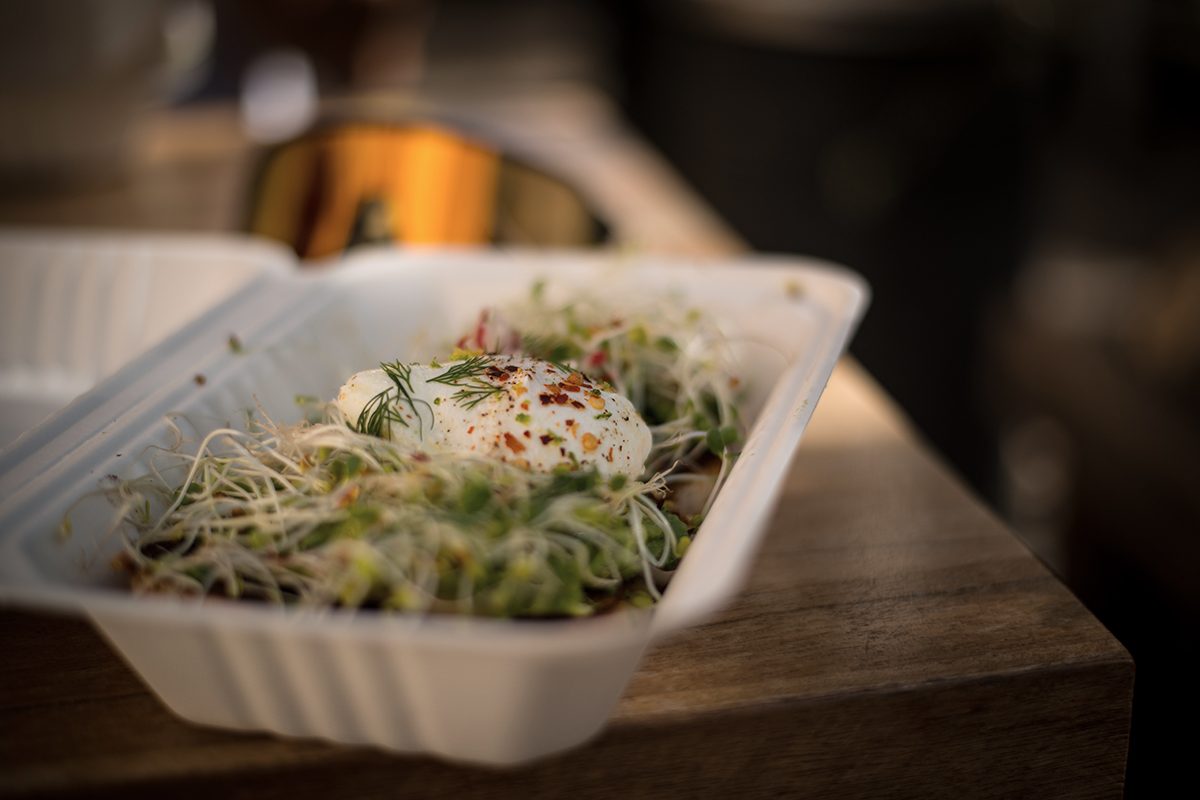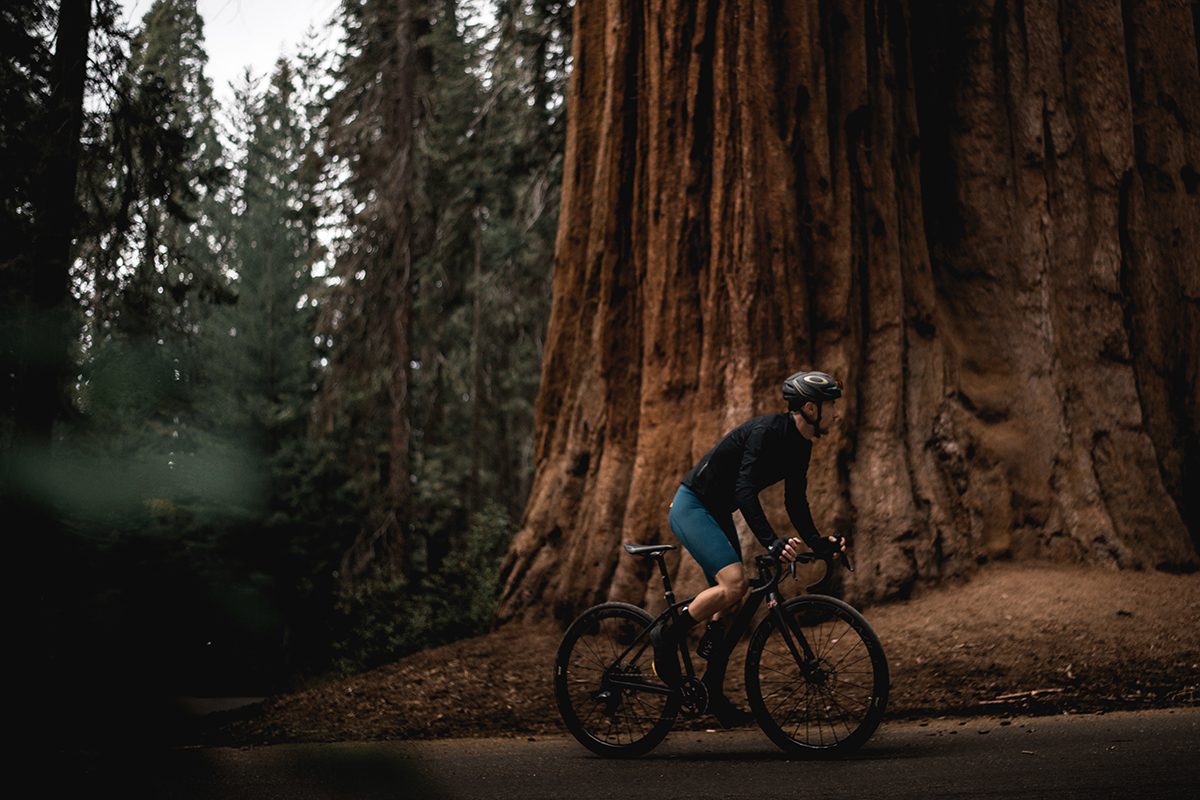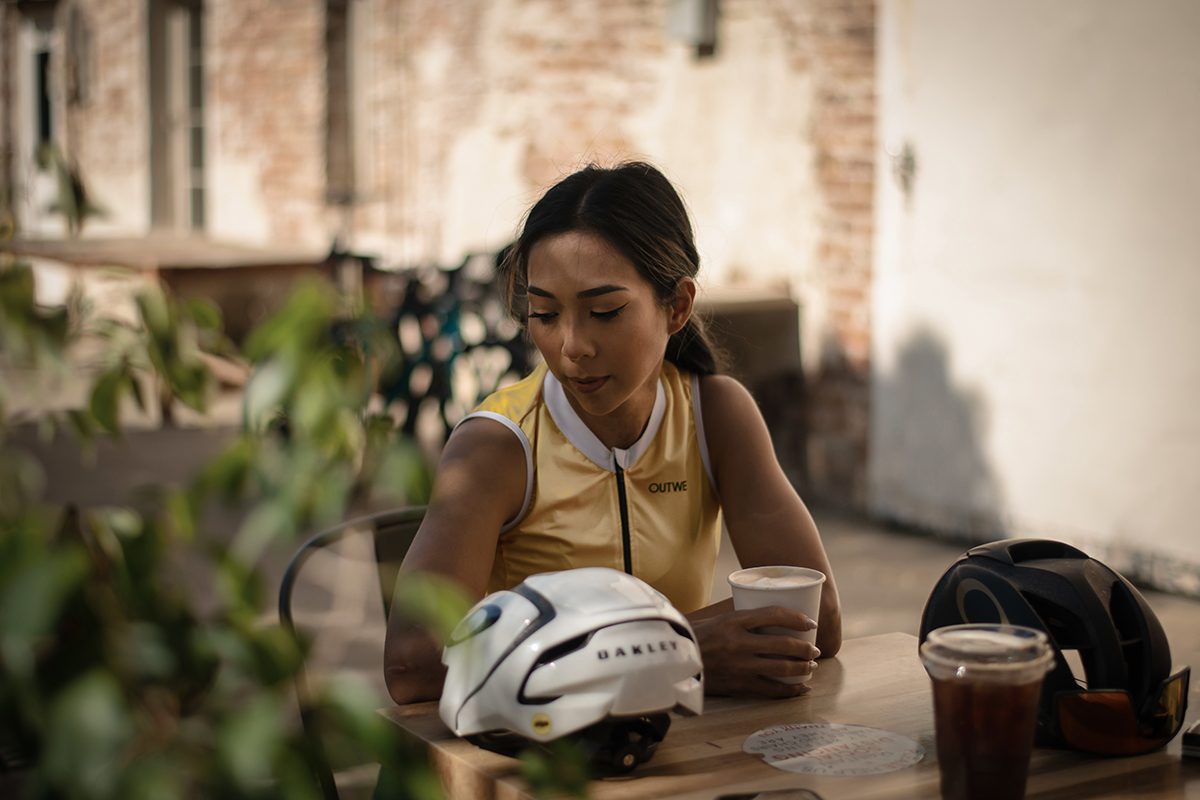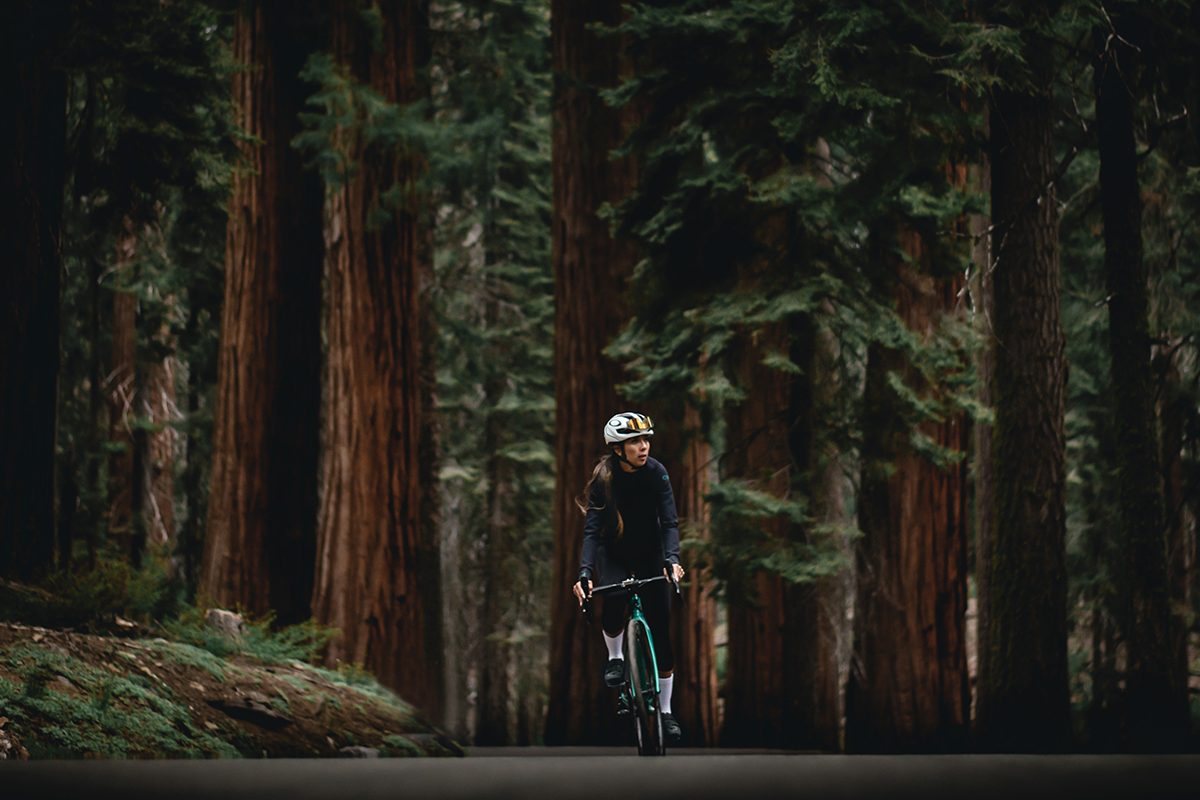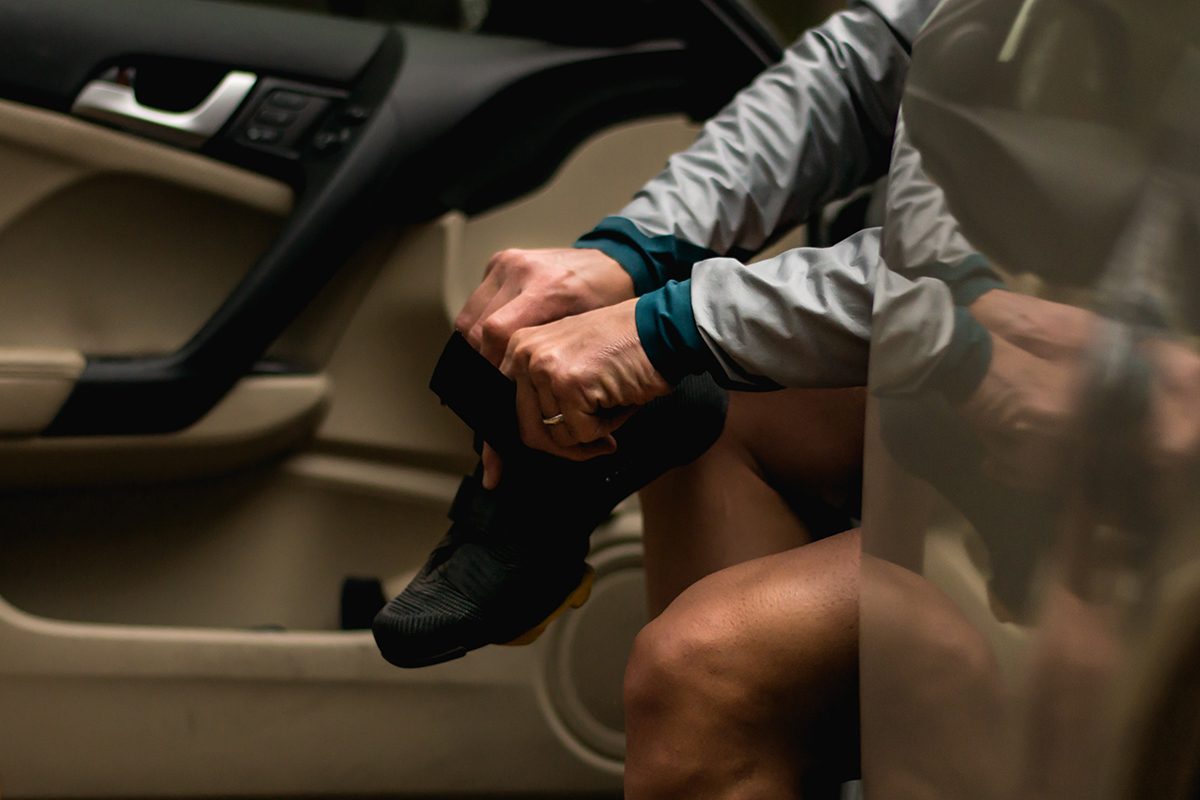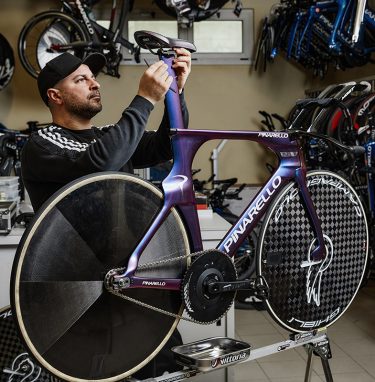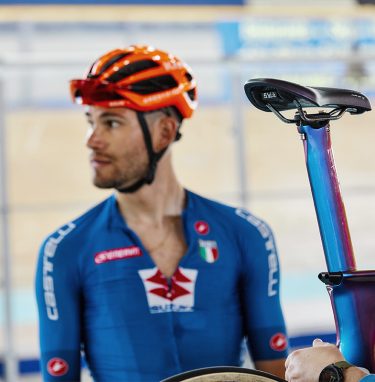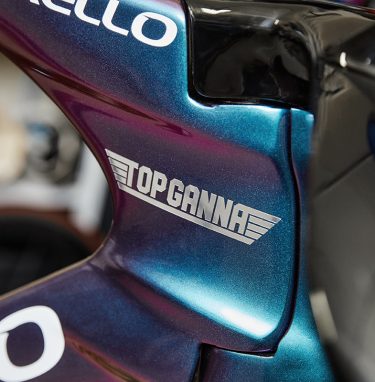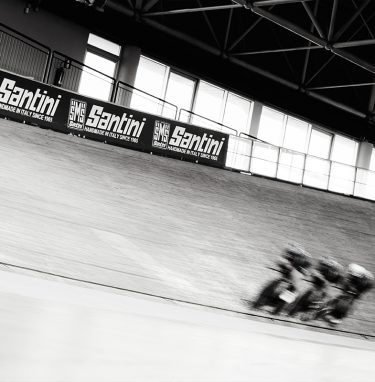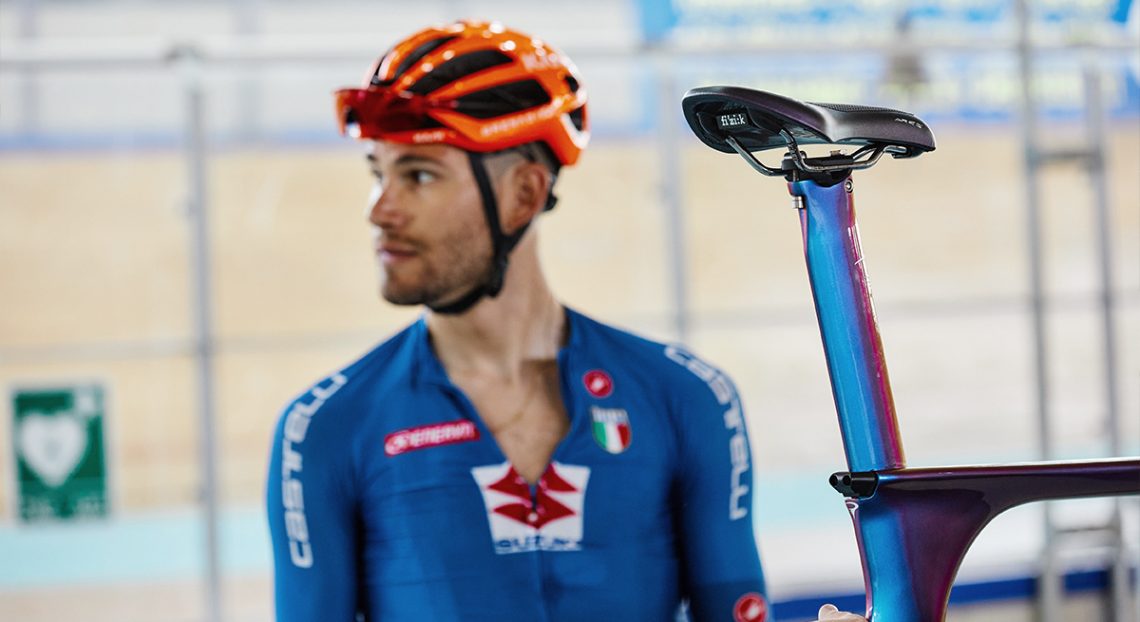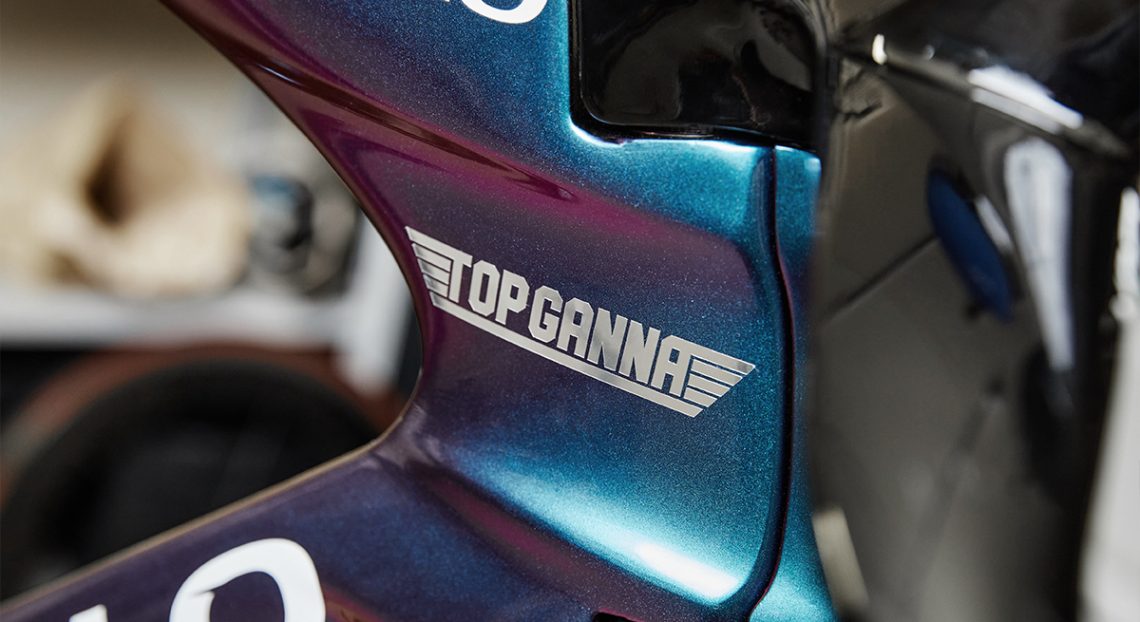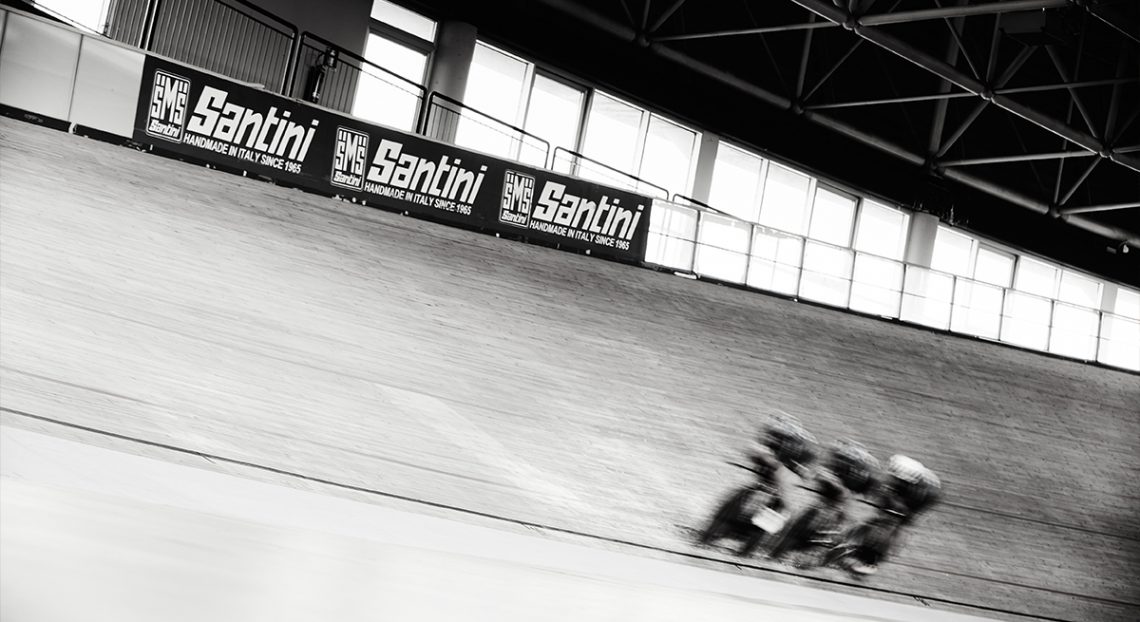Recently, pro trials rider Pol Tarrés and friends took to the trails around Val d’Aran in Catalonia for three days of great riding. Enjoy their amazing e-bike adventure below.
Val d’Aran is in the north-western part of Catalonia, Spain, in the heart of the Pyrenees where 30% of the territory is over 2,000 metres high. The mountains that surround Val d’Aran form a natural barrier, which has played a very important factor in the history, culture and climate of the area—not to mention, they provide riders with a true mountain biker’s paradise.
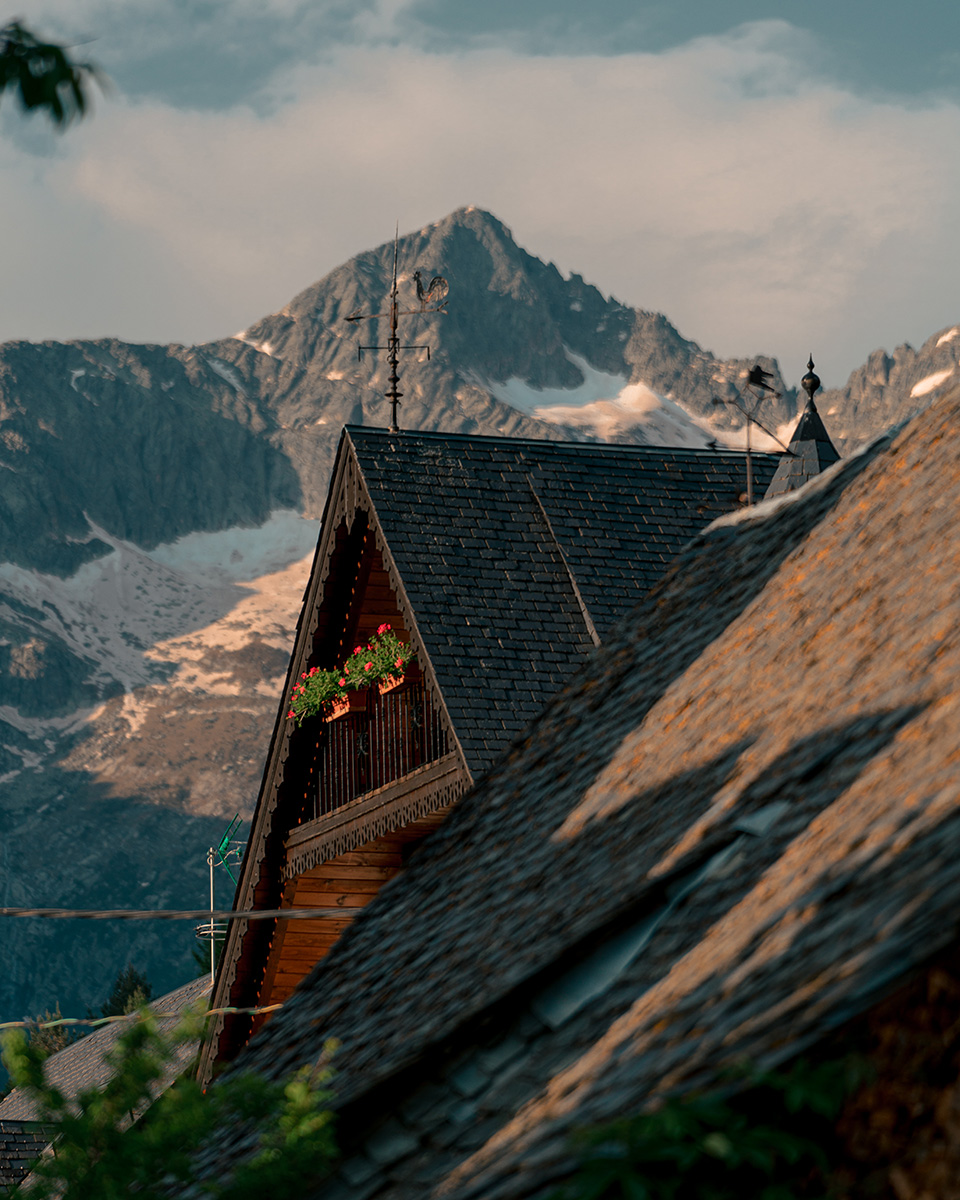

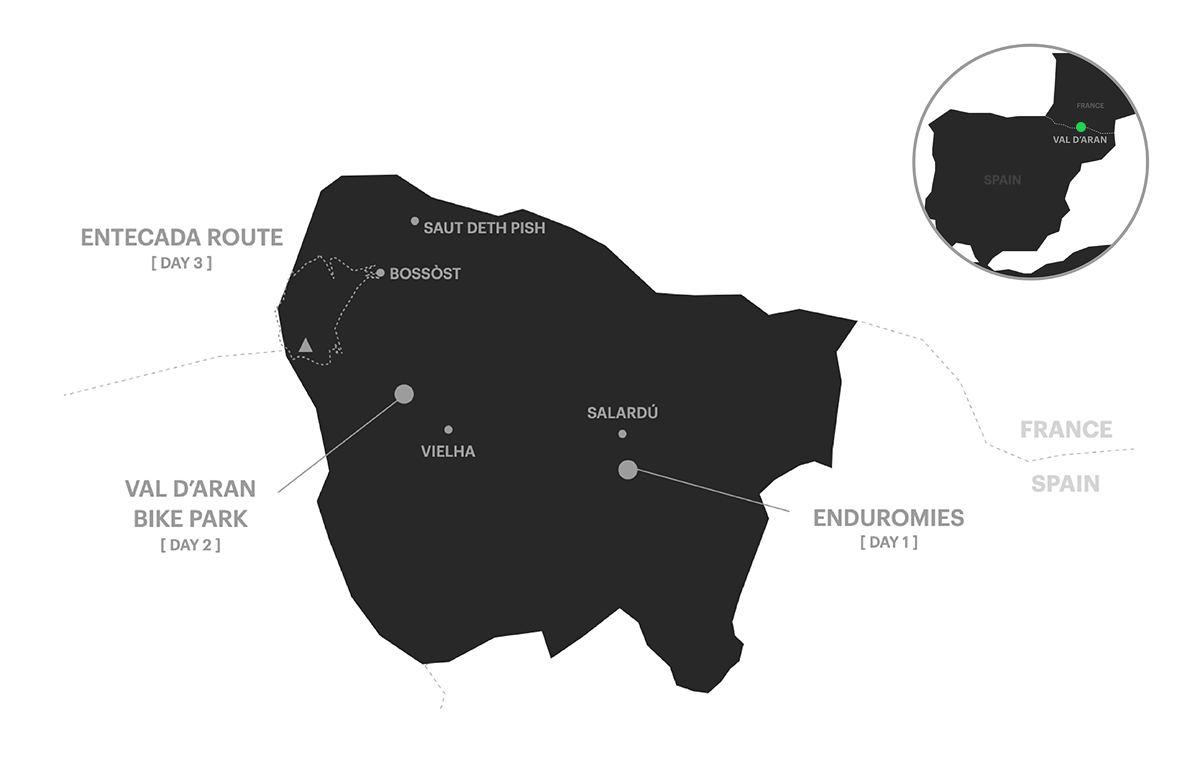
DAY 1: ENDUROMIES
The first descent we rode was Pruedo. It is more than an hour and a half to the peak by lift, but it is totally worth it because of the valley views from the top. The first part of the descent consists of old trails adapted for bikes. At some points, because of the rocky terrain, the route gets very technical. The trail goes through a couple of tunnels that, if they were just a few meters longer, lights would be needed. At the beginning of the downhill section, the trail is a bit broken up with many loose rocks, but then it gets easier and faster until you reach the bottom.
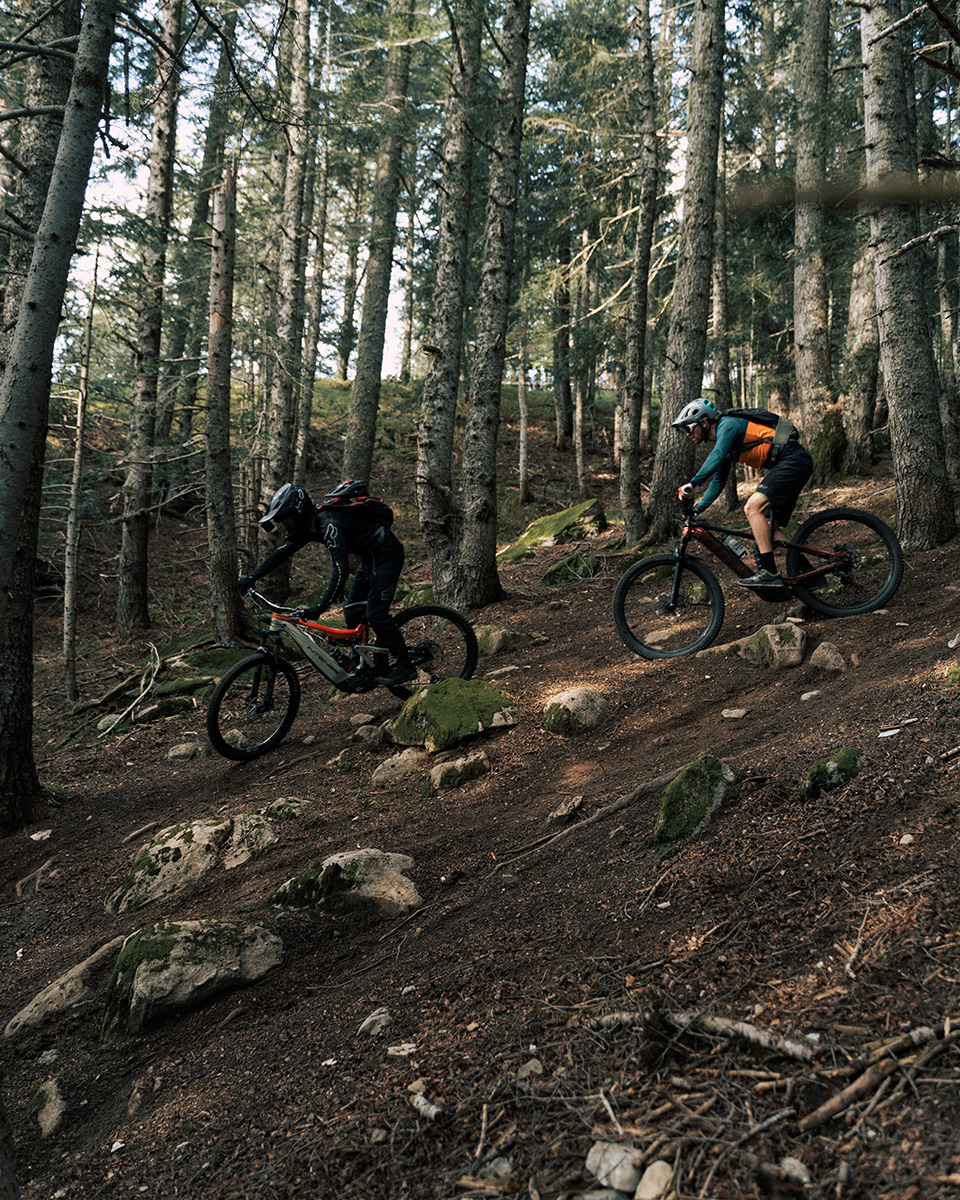
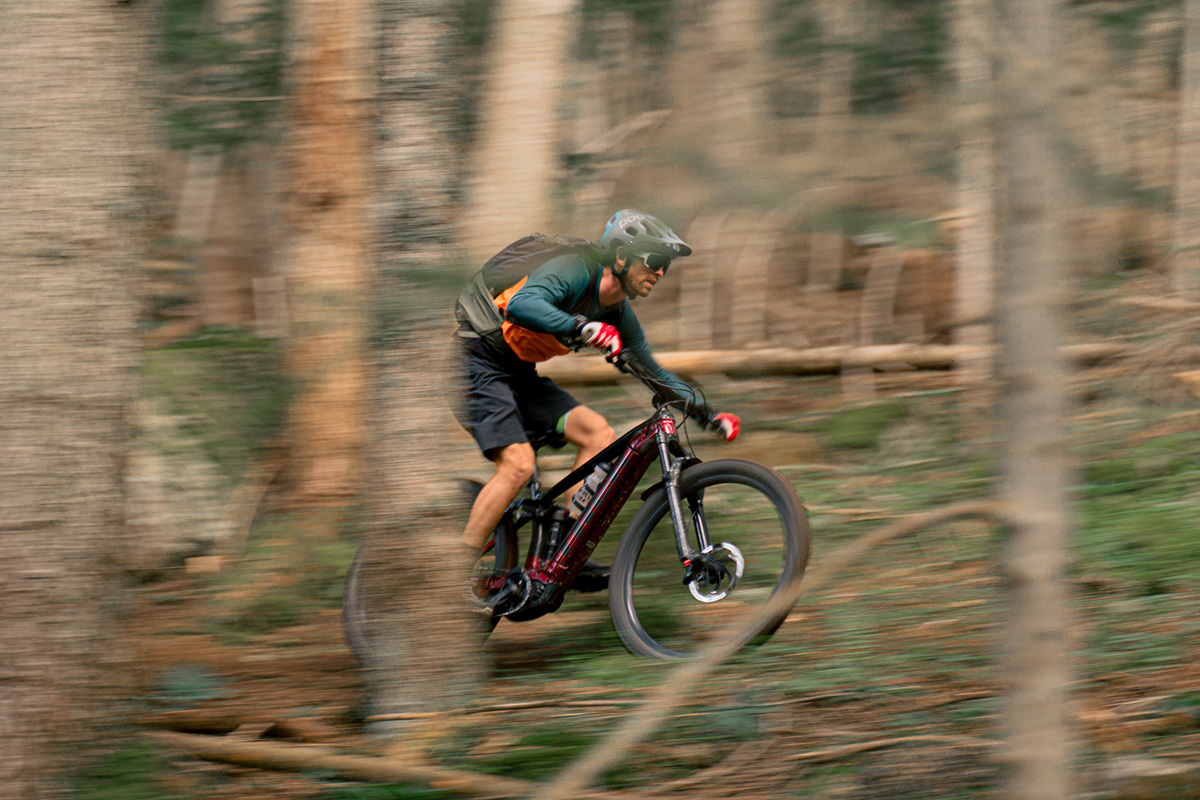
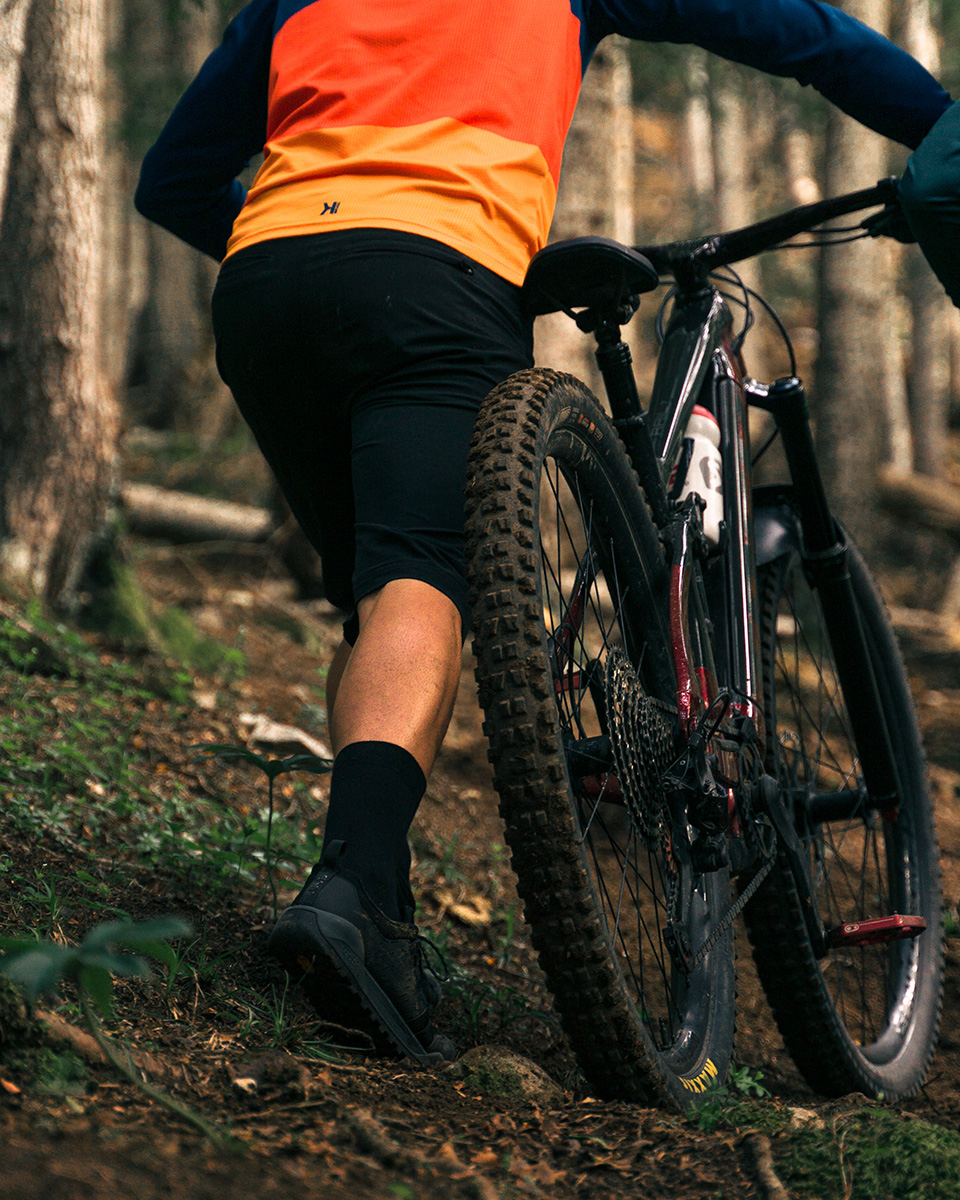
There are three original trails: Pruedo, Eth Sanglier and Eth Taro. However, the Aran Bike Park guys open new trails often. We were lucky, and the conditions were spectacular with great terrain and a lot of grip. We rode on the northern face of the mountain, and the air was humid which boosted the ride quality. You can find both fast and technical sections as well as flowy riding in this area.
DAY 2: VAL D’ARAN BIKE PARK
On the second day, we went to Val d’Aran Bike Park, located in the Baricauba Forest, about five minutes by car from Vielha. On these trails, you’ll find wide-open, straight sections where you can go very fast, slower parts with rocks and slippery roots, very tight turns and quite technical, steep areas.
Even though it rained a lot throughout the day, the forest is very dense, making it a good place to ride if you get caught by bad weather. What we really appreciated was the lift, which is done by road and takes about 20 minutes by e-bike.
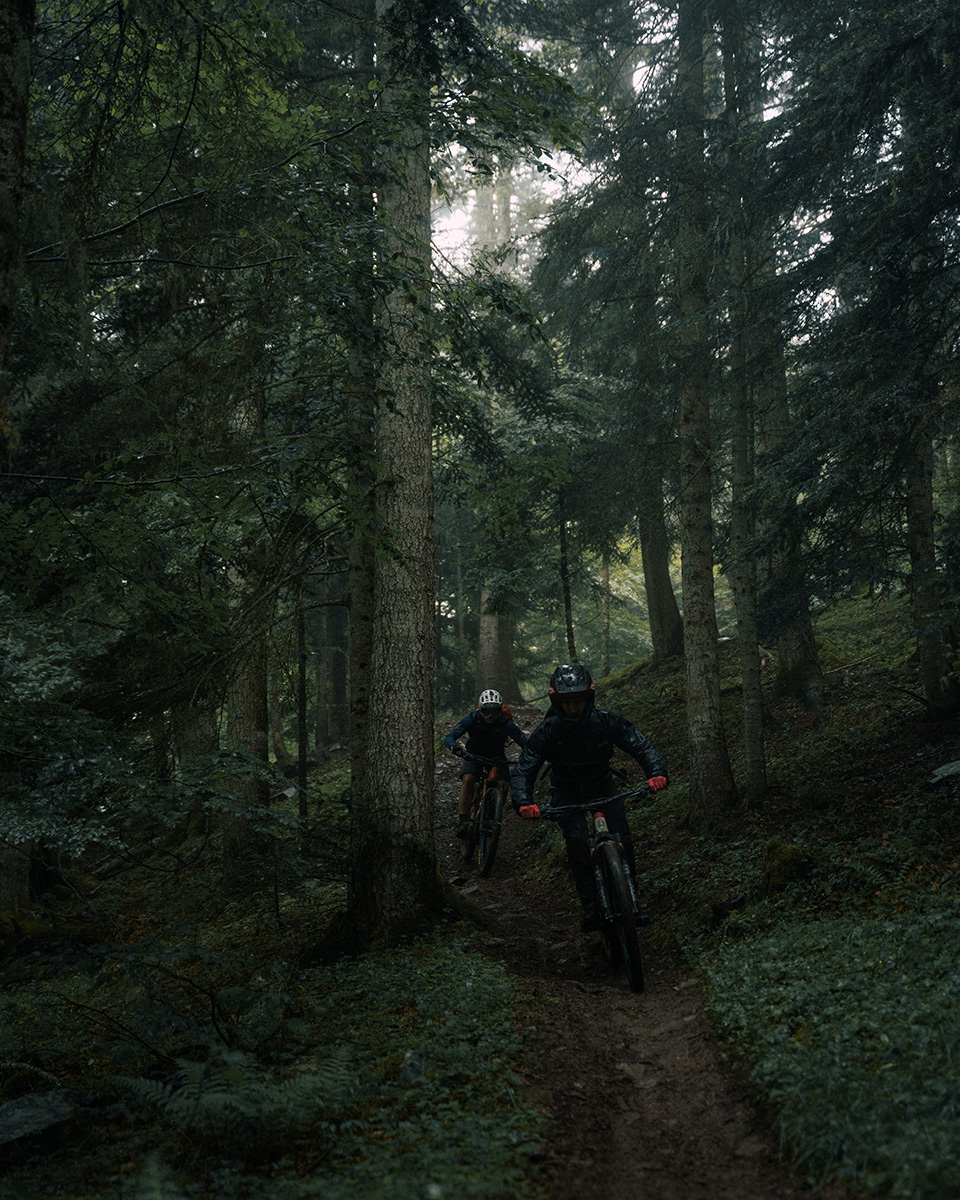
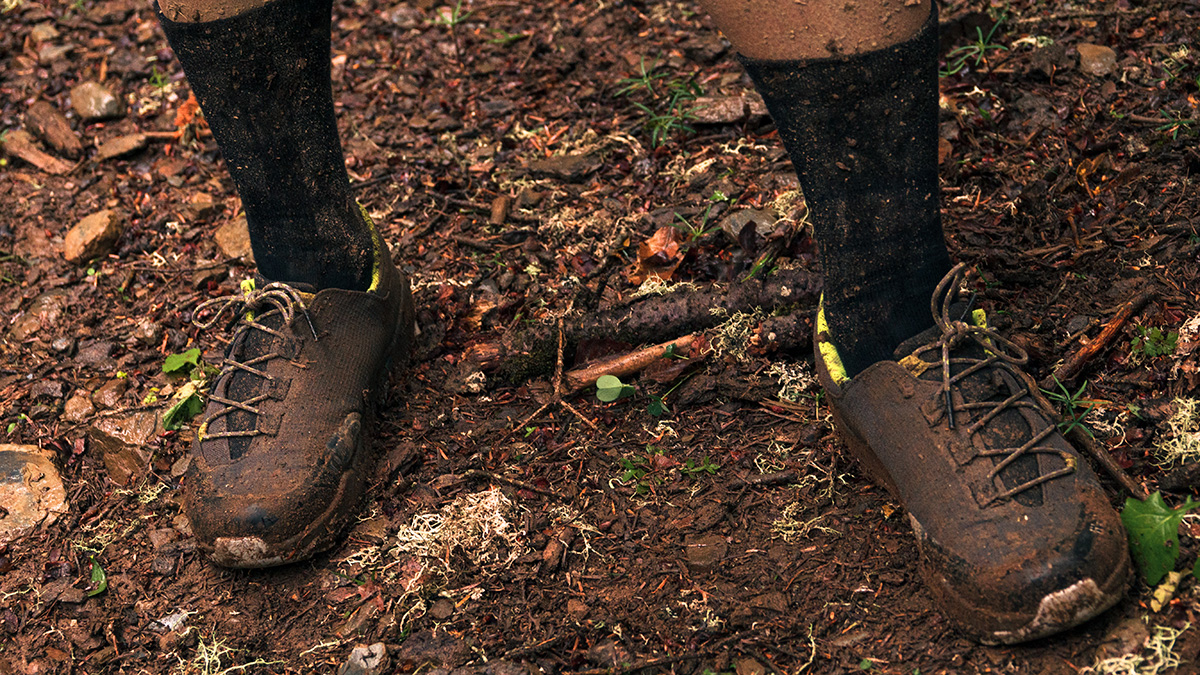
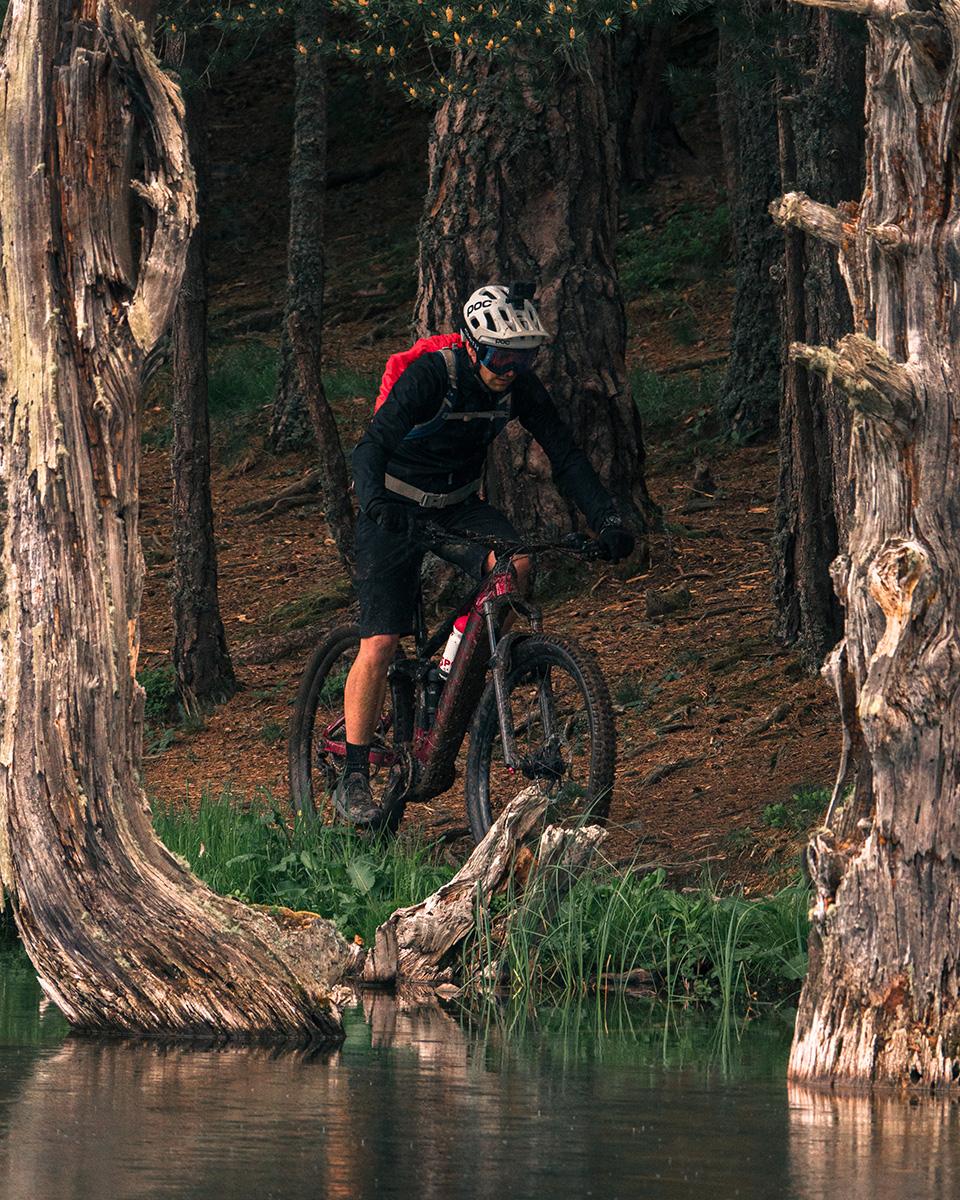
DAY 3: RUTA ENTENCADA + SAUT DETH PISH
For the third day, we wanted to do something different; we wanted a route that would take us through the mountains of Val d’Aran, and the locals recommended the Entecada route. It’s about 40km with 1800m of climbing. We started from Bossòst and rode uphill for about one and a half hours until we reached the Coth de Baretja, where we couldn’t see anything since dense fog covered everything.
From there, we continued on downhill singletrack that was quite technical because of the slippery rocks and mud from the previous day’s rain. At the end of the singletrack, it was time to climb again, but Ernest’s bike had run out of battery. Luckily, Andreu had over 25% of his battery left, so we fashioned a rope from a couple of spare inner tubes. Andreu towed Ernest for about 20 minutes before reaching the top. The last part is the hardest with the steepest climbs of the entire route.
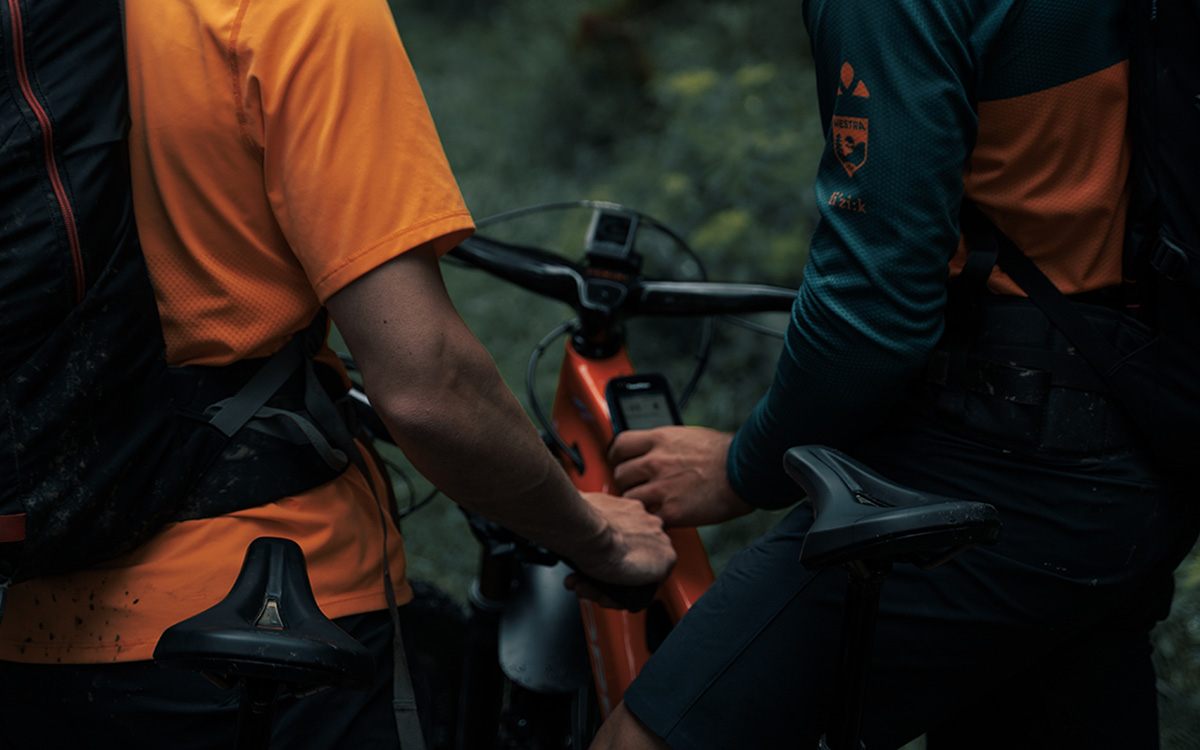
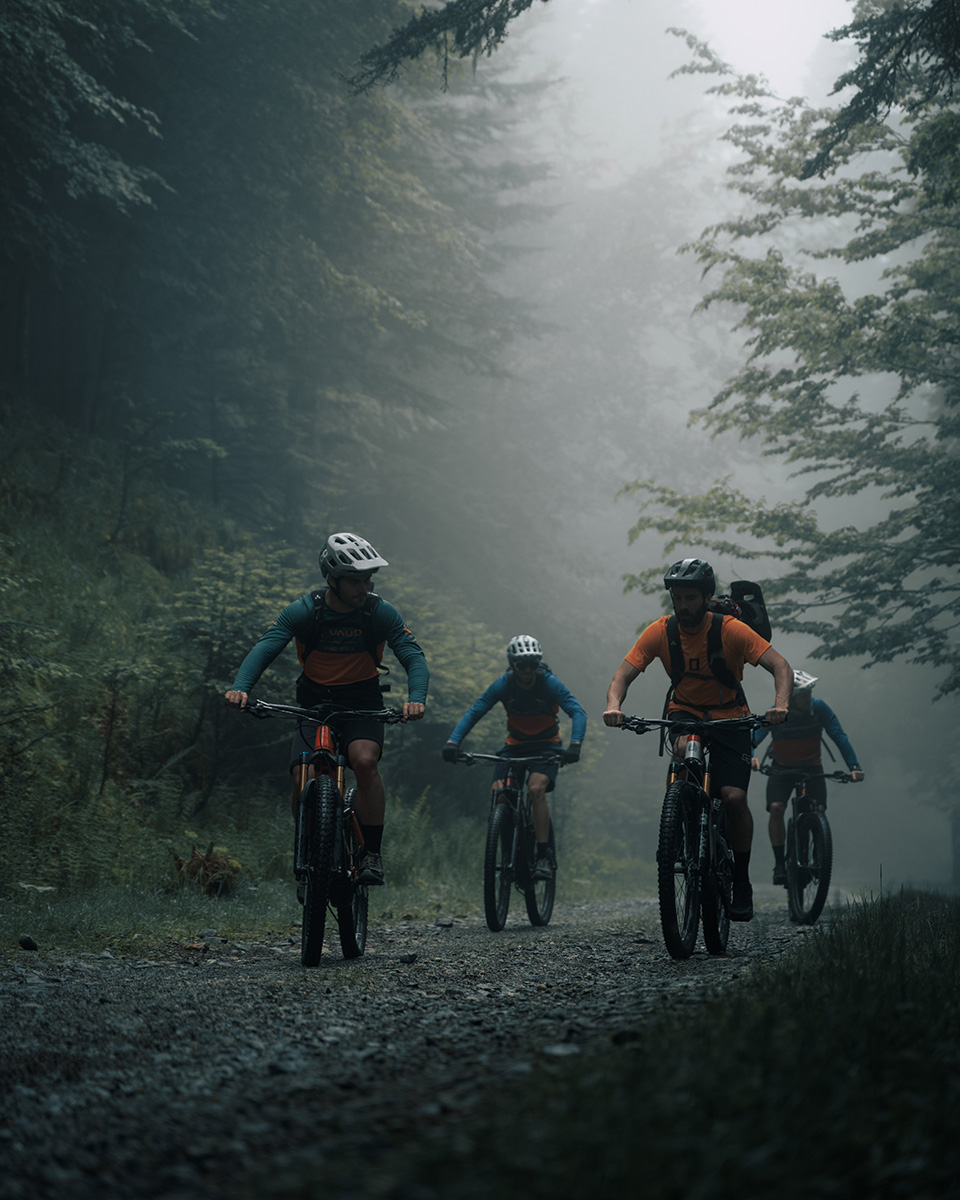
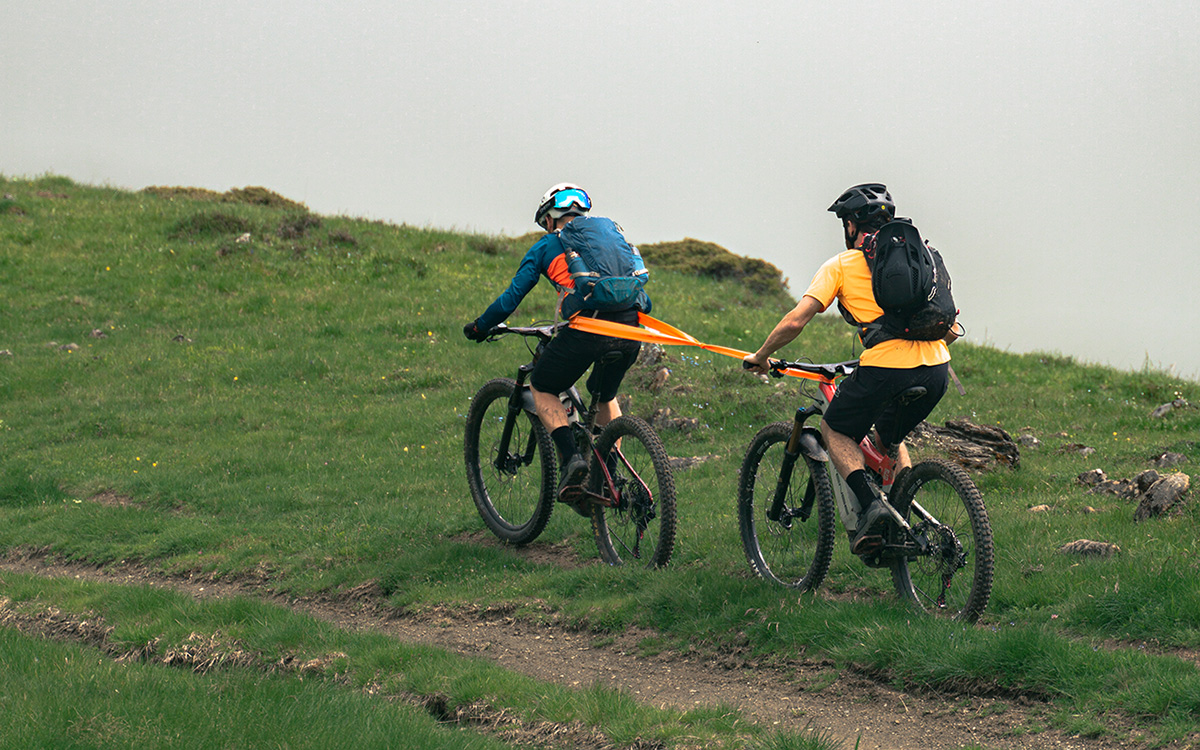
The beginning of the descent is steep singletrack with some quite technical sections where you can’t make any mistakes because it would be very dangerous to crash. Even so, the views of the mountains ahead were worth it. Beyond the technical singletrack, you suddenly enter the dark, humid forest where the trail changes completely. It becomes very flowy, with no stones or tight turns and consists instead of straight lines where you can go flat out. It is one of the best trails we rode on our entire trip, despite being completely covered in mud, meaning we had to be careful on the fastest sections.
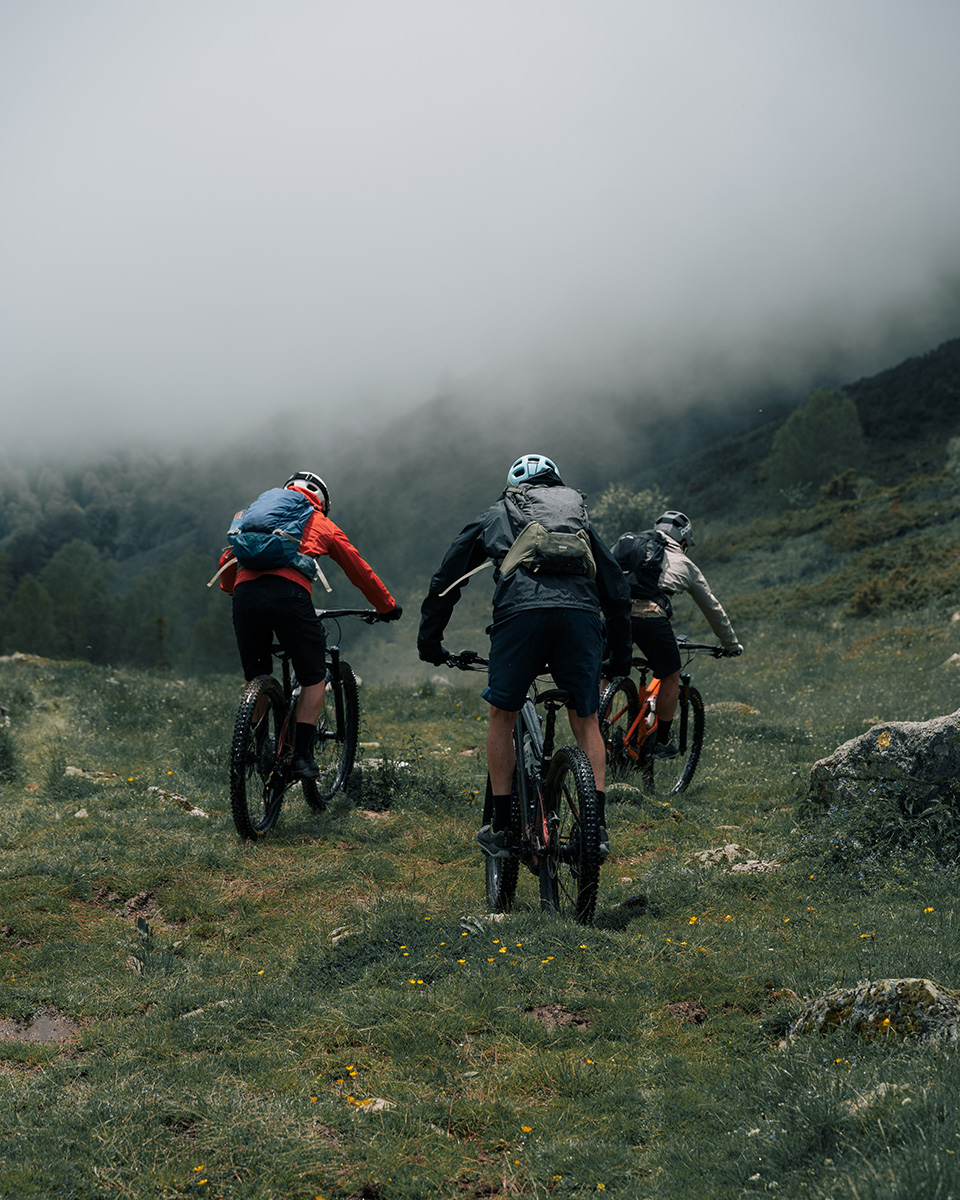
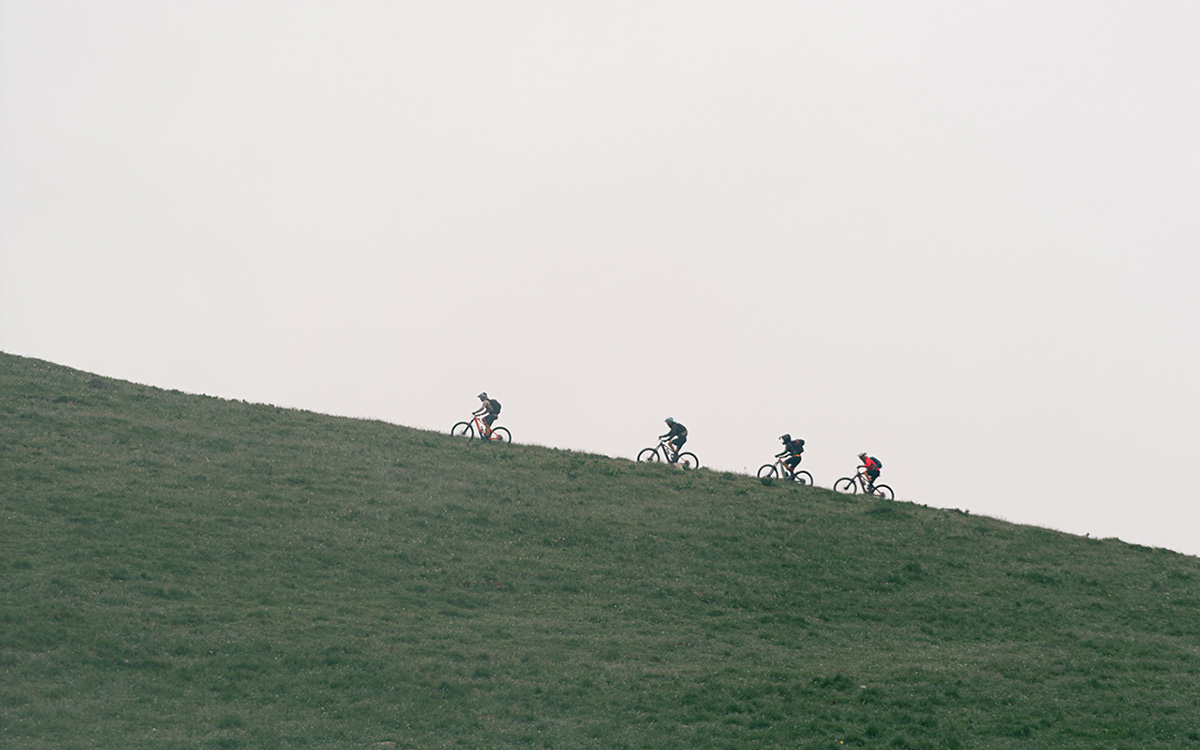
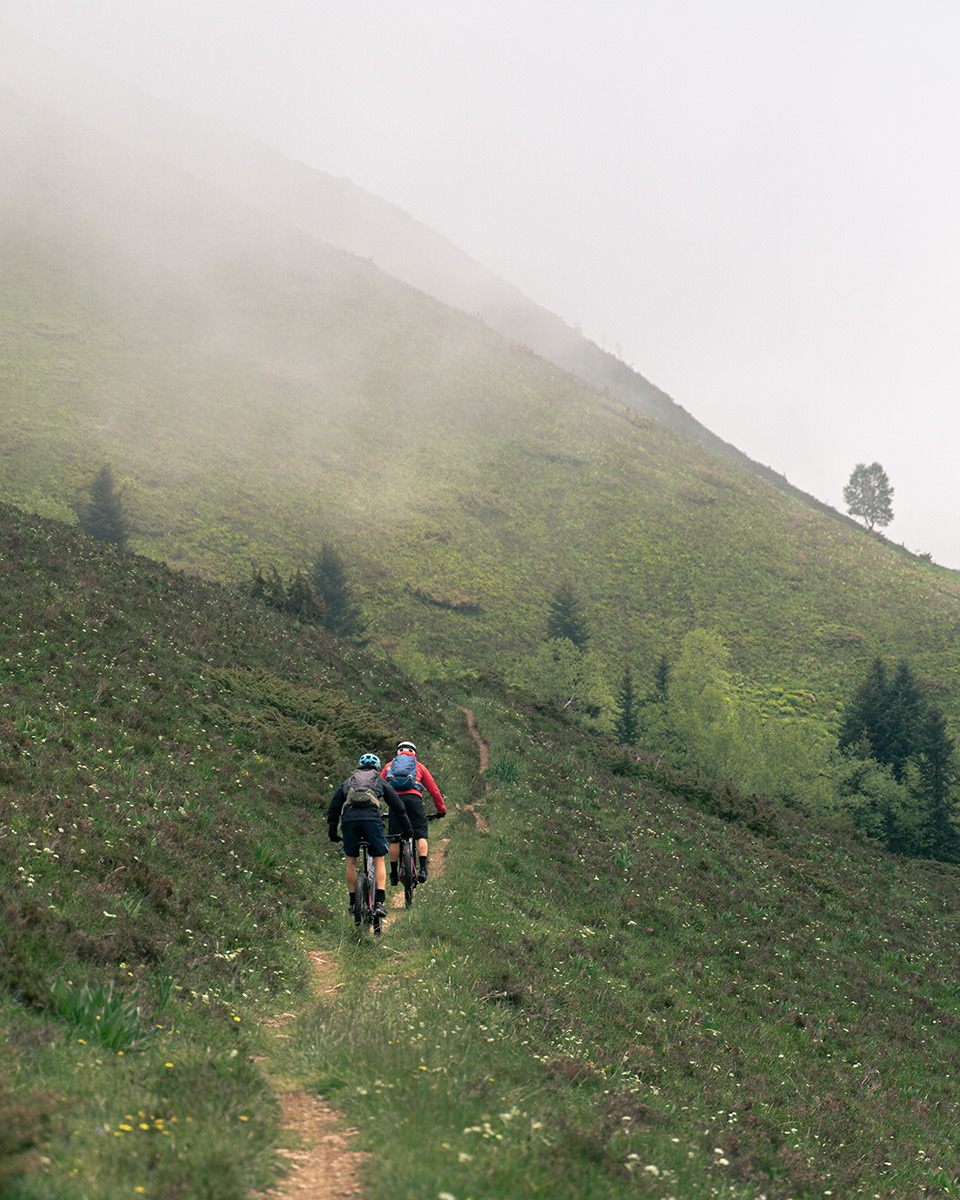
In the afternoon, we were pretty tired and wanted to rest, so we went see the Saut deth Pish waterfall. There aren’t that many trails in the area for riding, so instead, we enjoyed capturing some impressive pictures and videos to mark the ending of a great trip.
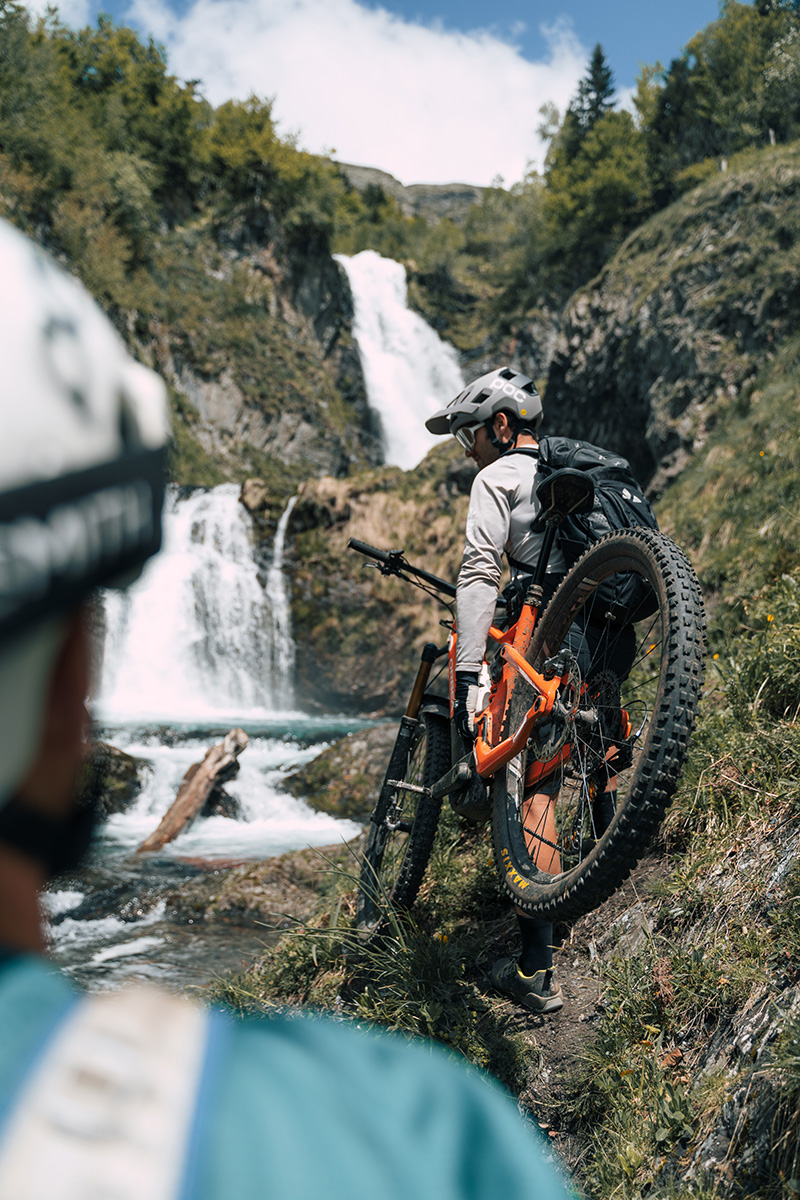
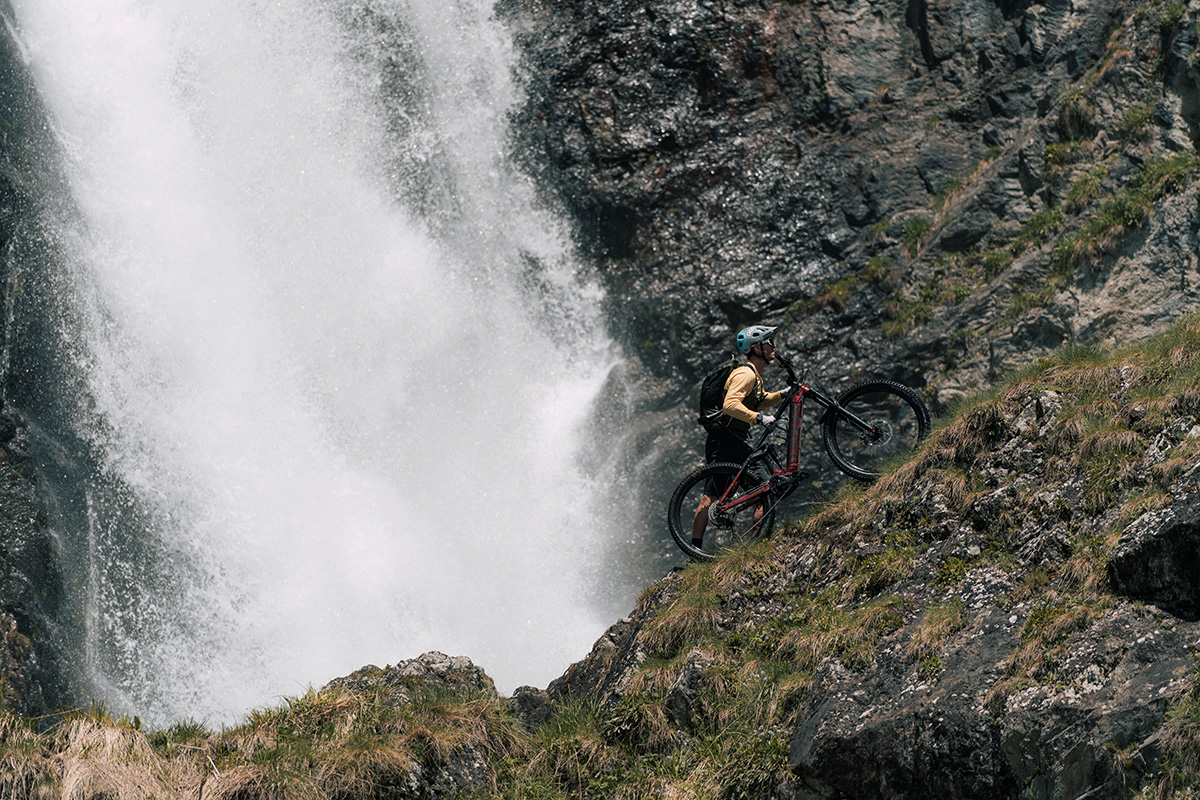
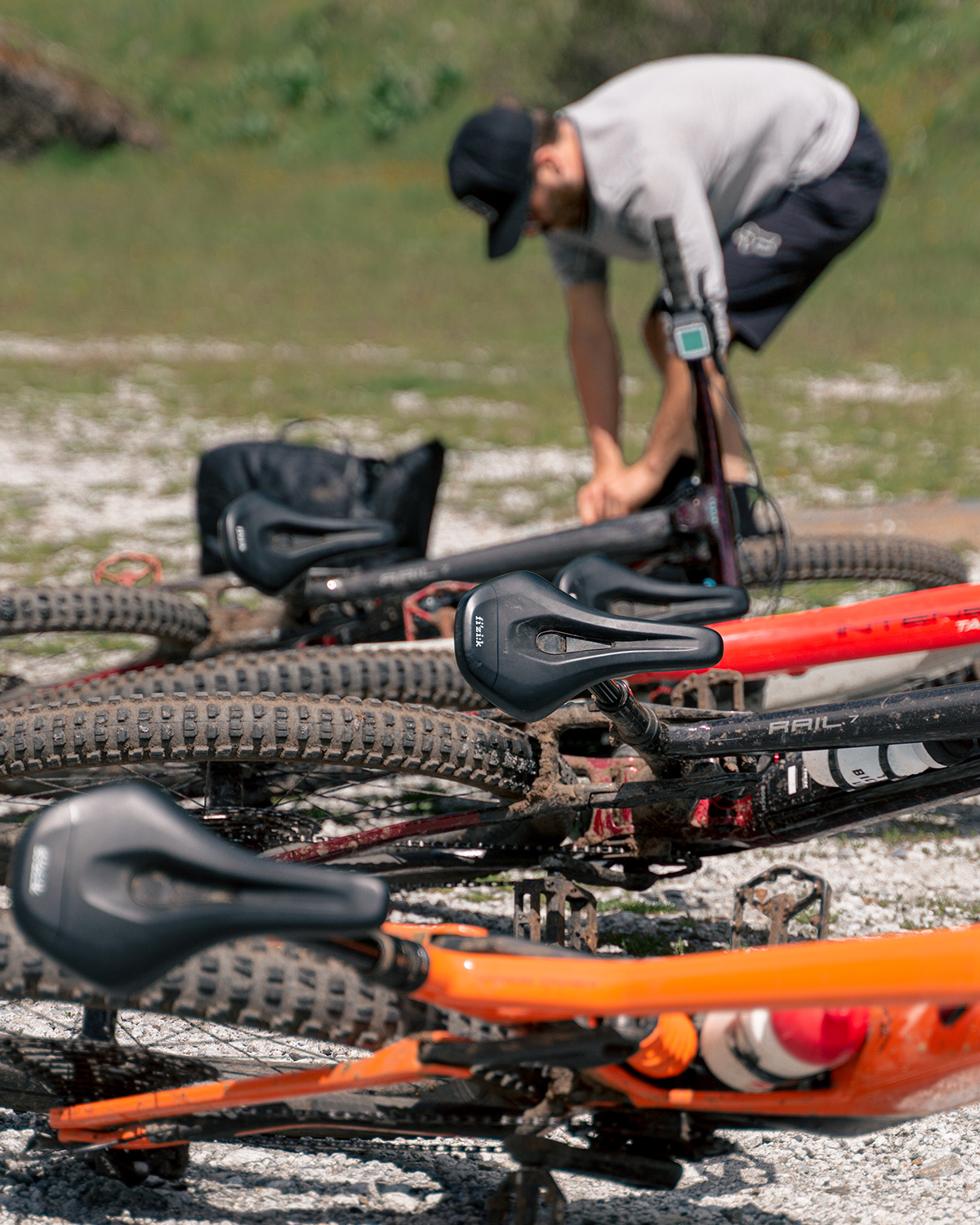
Make sure to follow Pol Tarrés (@pol.tarres), Ernest Adalid (@ernestadalid) and all their friends for more great MTB adventures.
Pictures by Alvaro Rodríguez
(@alvarokrodriguez / www.alvarokrodriguez.com)
California has no shortage of spectacular landscapes – and what better way is there to explore them than on two wheels with good company. That’s why when Melissa and Frenk Martucci were invited to a wedding near the Sequoia National Park, they jumped at the opportunity to extend their trip and spend a day riding amongst these silent, ancient giants.
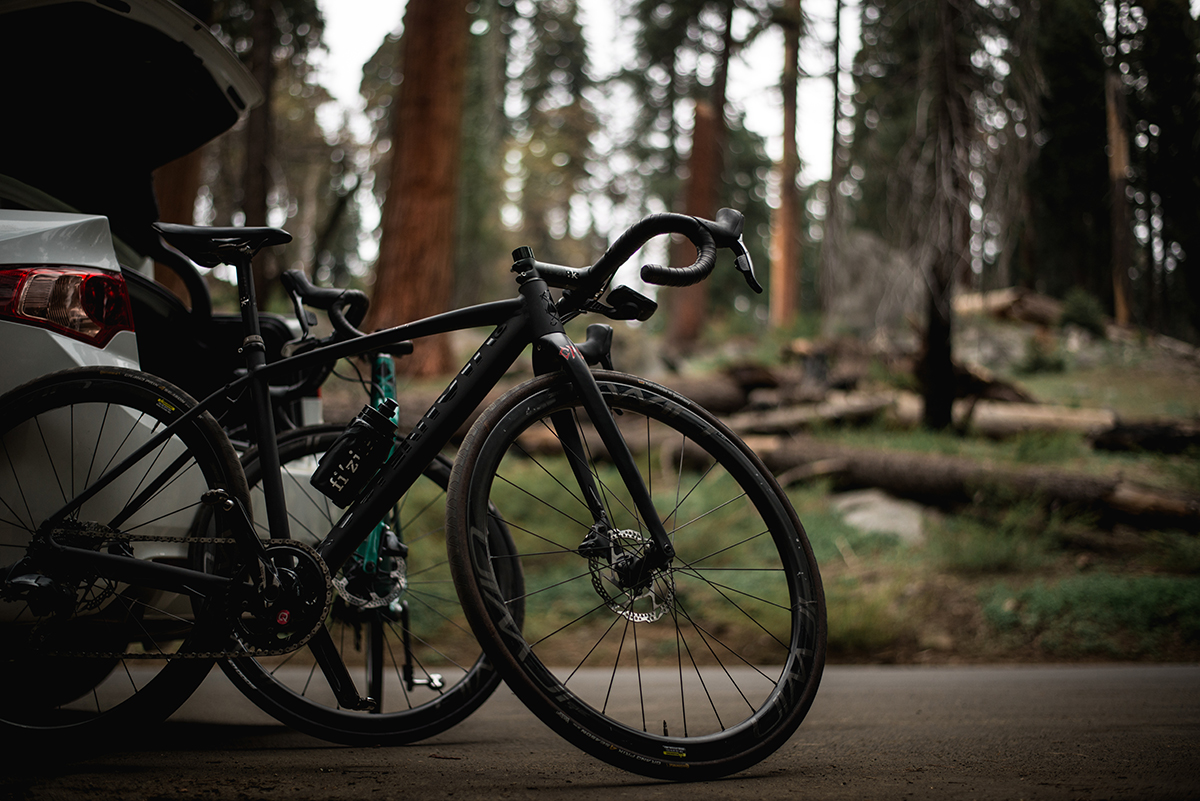
First, it needs to be said that Frenk and I need another day to fully explore Sequoia. As it happened, our visit to Sequoia was actually a side adventure after attending the wedding of my close college friends. Both Frenk and I had never been, so we weren’t quite sure what to expect, but we quickly realized that a day there was simply not enough.
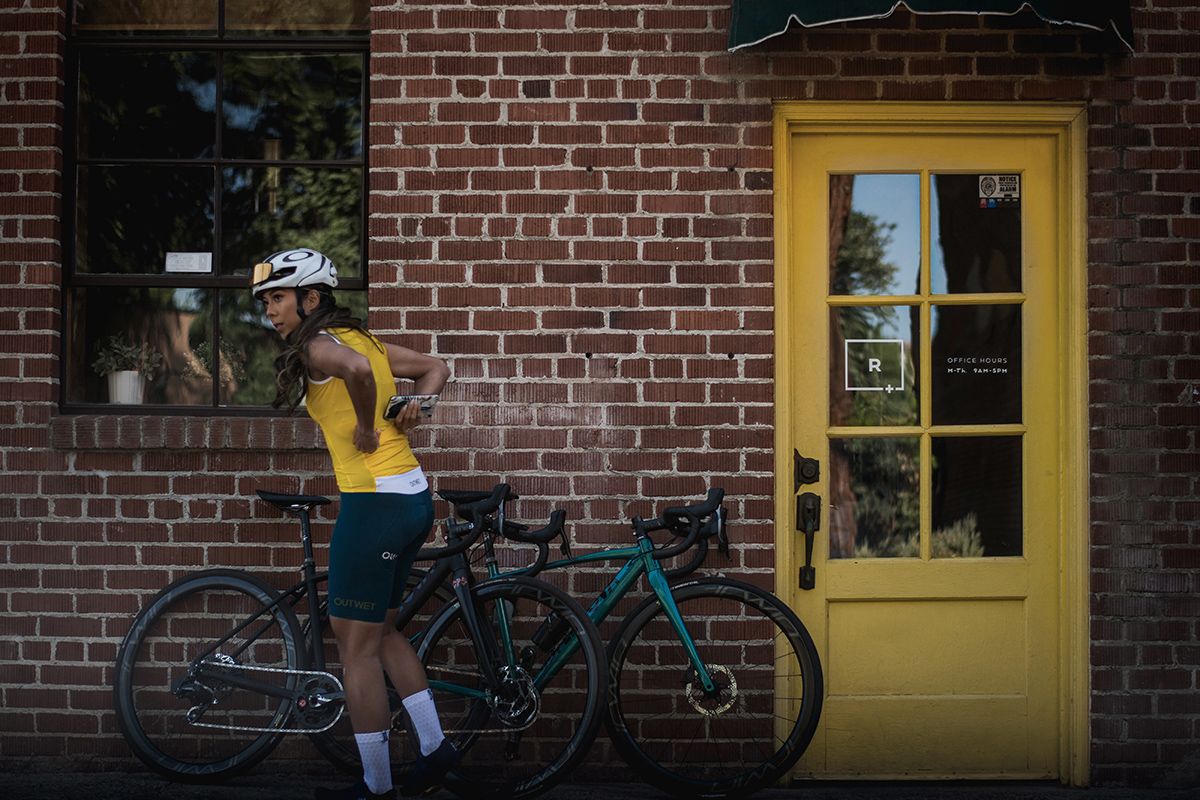
The entrance to the park itself sits at the bottom of the foothills. It is 16 miles to the Giant Sequoia Grove, which is where you can find a large collection of the epically beautiful and mind-blowingly large sequoia trees. To get there from the park entrance, you have to climb just shy of 5,000 feet through a plethora of sharp turns and switchbacks. We recommend leaving early in the morning to beat the heavy traffic that usually picks up at about 10 am. Luckily, there are plenty of turnouts to allow cars to pass if needed. One thing we didn’t expect was to encounter so many deer on the roadways. Frenk and I saw about six deer on our way up and down, so proceed with caution – especially if you are on the descent.
Once in the sequoia grove, you can still see the aftermath of the 2020 Castle Fire that scorched many of the trees. Some of the sides of the survivors are burned, but remarkably, these trees are still alive and thriving.
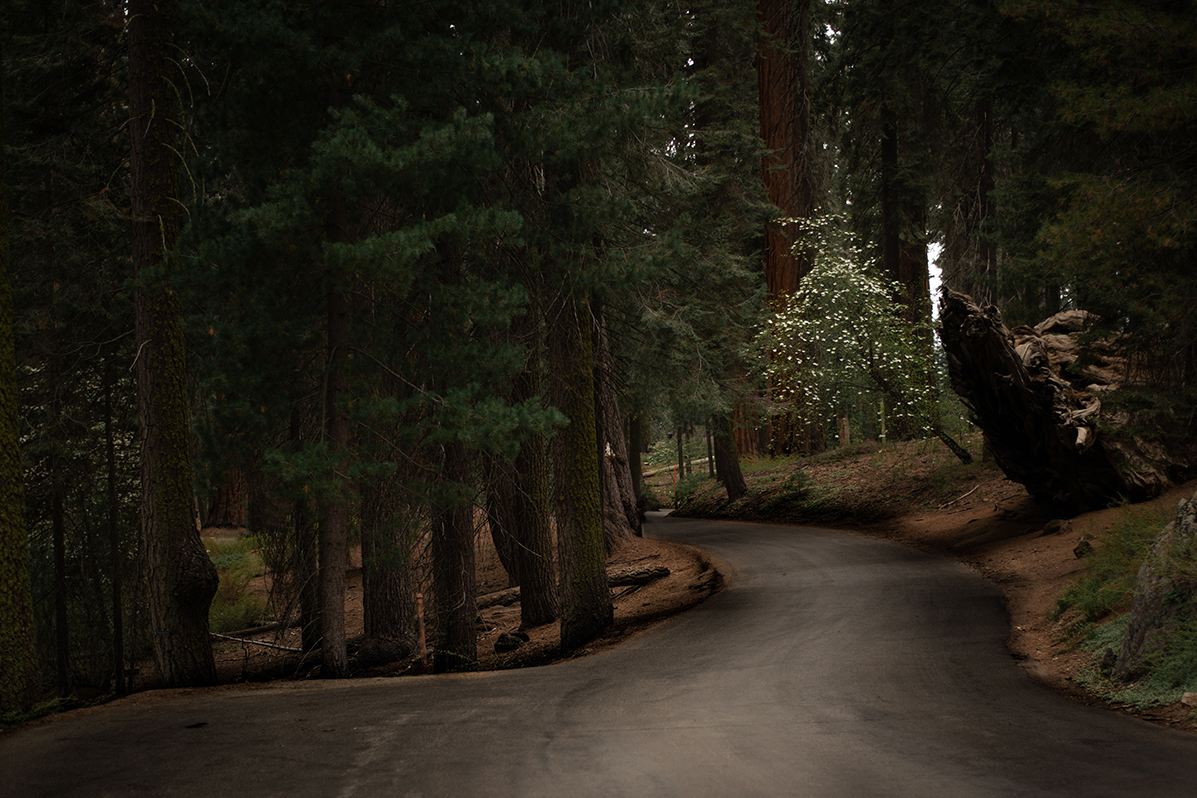
At the top, the weather was dramatically different, and at midday, we were able to experience the forest filled with fog, which was utterly magical and unlike anything I’ve ever seen. The trees themselves are unusual in the sense that they don’t feel like trees. If you touch one, you will notice that they are almost soft and squishy in texture. Being amongst these trees feels like time traveling in a way – some of them are 3,000 years old! To say that they are pieces of history is an understatement. These trees have played witness to history itself, and the fact that they have been around for this long – untouched, untainted – is inspiring.
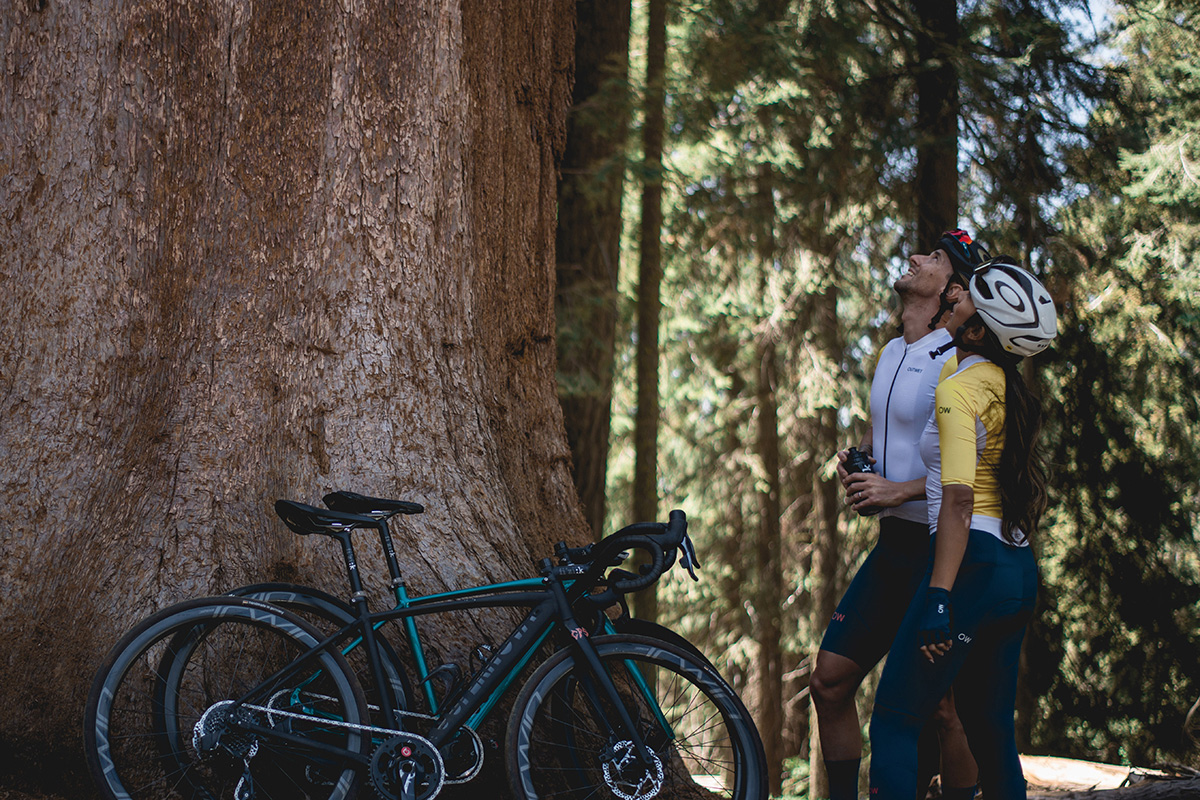
My hopes are that these trees will continue to live on throughout the ages and that the generations to come will continue to love, respect, and protect them, just as our ancestors did. We plan to return to Sequoia soon so that we can do more riding and definitely some hiking and exploring, too!
You can follow all of Melissa and Frenk’s ongoing adventures over on Instagram:
@frenkmartucci, @_mizmissy_
Five-time World Champion, three-time individual pursuit world record holder and star of one of the most exciting breakaways of last year’s Giro—Filippo Ganna has certainly made his name known in his short twenty-four years on earth. And while the 2020 season may have been one of the most unusual in any fan’s recent memory, it marked the most memorable of this young Italian’s burgeoning pro cycling career. Claiming victory as a national time-trial winner as well as earning distinction as the first Italian elite men’s time trial World Champion, riding alongside fellow INEOS Grenadiers, Ganna went on to repeatedly don the Maglia Rosa throughout the Giro d’Italia, following each of his four stage wins.
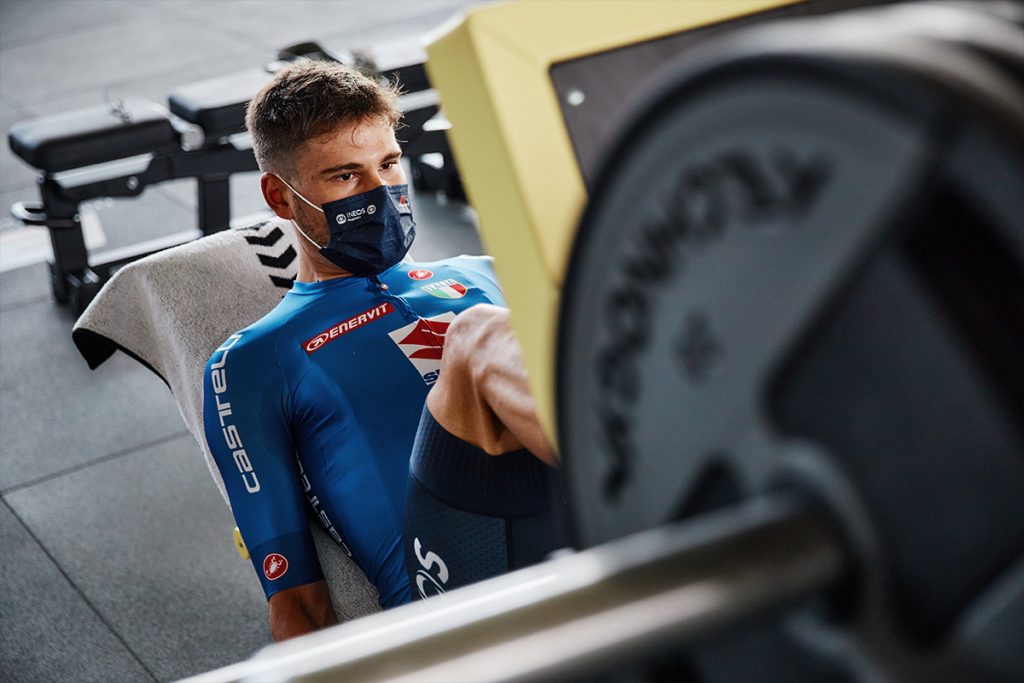
But victory doesn’t come cheap, with countless hours of discipline and hard work required to produce the watts needed to smash records and win World Championships. Recently back from high-elevation training with team INEOS, Filippo joined the Italian national cycling team for laps at the local velodrome, and we tagged along to witness a typical day in the run-up to this summer’s big races, including Ganna’s much anticipated return to the fast-approaching Giro d’Italia and the Tokyo Olympic Games later this summer.
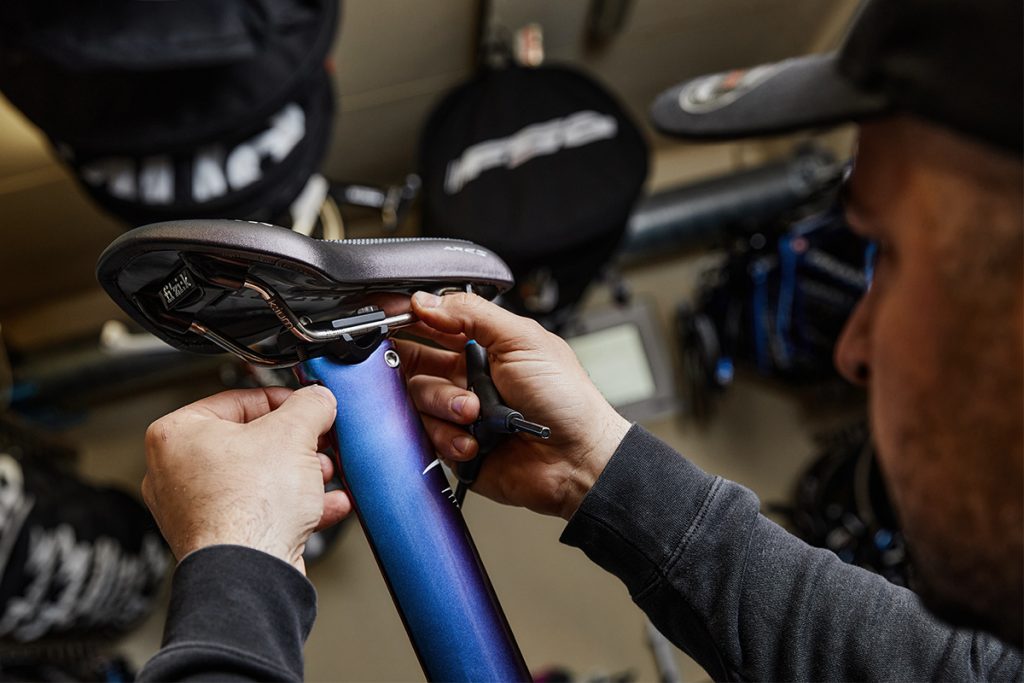
Of course, the first step in any successful day on the saddle starts with dialling in the right set up. Guided by the experience of the team’s mechanic, Ganna’s bike is fine-tuned and adjusted for the best fit for lap after lap around the track. After all, when milliseconds matter, millimetres can make all the difference.
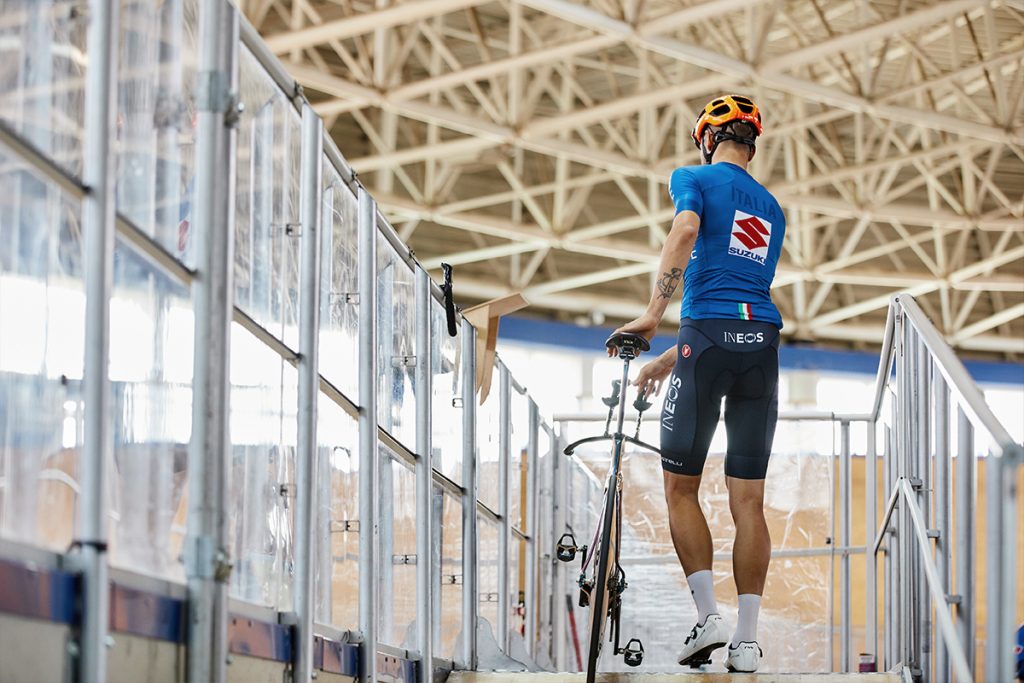
With his bike ready, Filippo steps onto the track, mounts his Pinarello – a work of art worthy of its own place on the podium – and starts to move. Spinning slowly at first, in a way that mimics his atypical approach to racing, he steadily gains speed until he’s little more than a blur, buzzing by with dizzying velocity. Tucking in with his team, they take turns in various positions on the paceline, lap after lap, as together they prepare for the team pursuit. But Ganna has more pressing matters on his mind as he splits off from the others, perfecting his form and building strength to hopefully, once again, come out ahead of the clock during this Giro’s two time trails—while ideally racking up plenty more stage wins along the way. After track laps, Ganna next heads to the gym to build strength through less–lightning-fast–means.
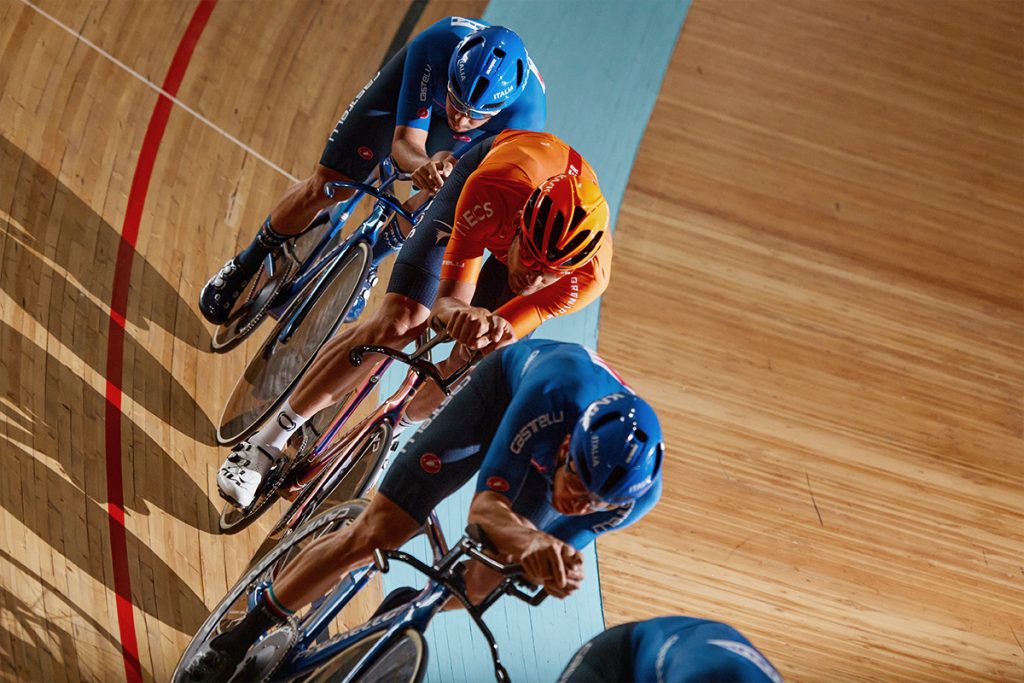
Finally, having completed his workout both on and off the saddle, it’s time for the three R’s of fitness: rest, refuel and repeat. Filippo will be back at it tomorrow, knowing that whether it comes to training on the track for Tokyo, racing the Giro with fellow INEOS Grenadiers or aiming to beat his own world record in the individual pursuit, to outpace the competition, he’ll have to work harder, go further and ride faster—even when that competition comes from within.
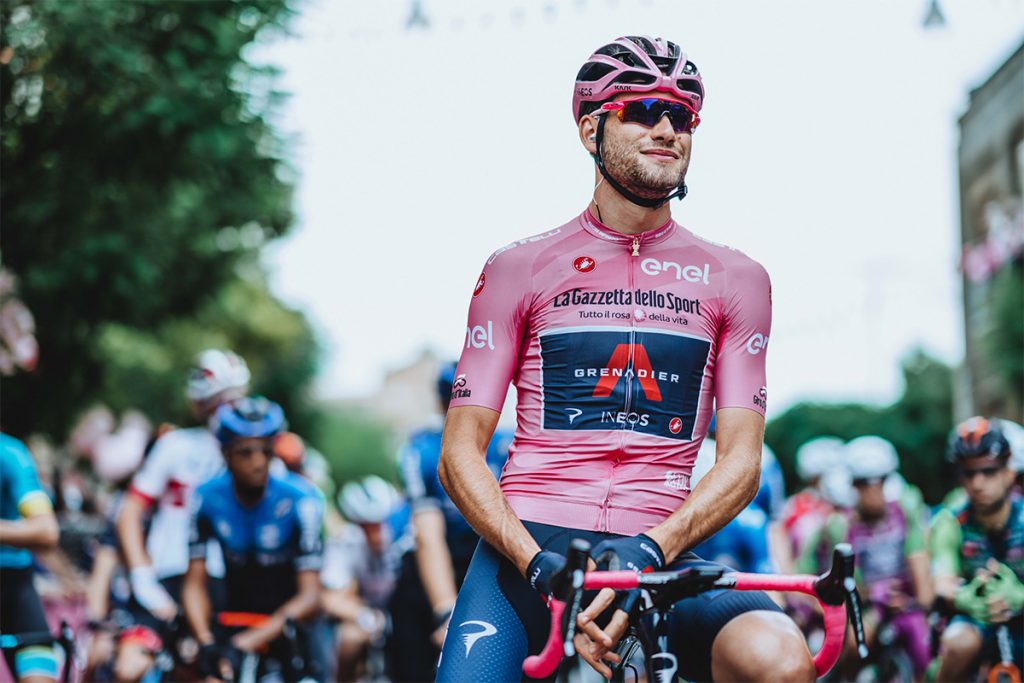
Be sure to tune in to watch Filippo Ganna in what promises to be an explosive opening stage of the 2021 Giro d’Italia this weekend, and follow along as Filippo, Egan Bernal, Pavel Sivakov and every member of team INEOS Grenadiers take on Italy’s grandest Tour.
Cycling in Thailand’s capital can provide quite the sensory experience. Riders taking to Bangkok’s bustling streets are greeted by the honking horns of tuk-tuks and scooters as they punctuate the steady hum of regular traffic, as well as delectable smells carried from crowded restaurants and open-air food stalls. Modern architecture gives way to ornate palaces and ancient temples while the hot, humid weather gives life to the city’s lush greenery.
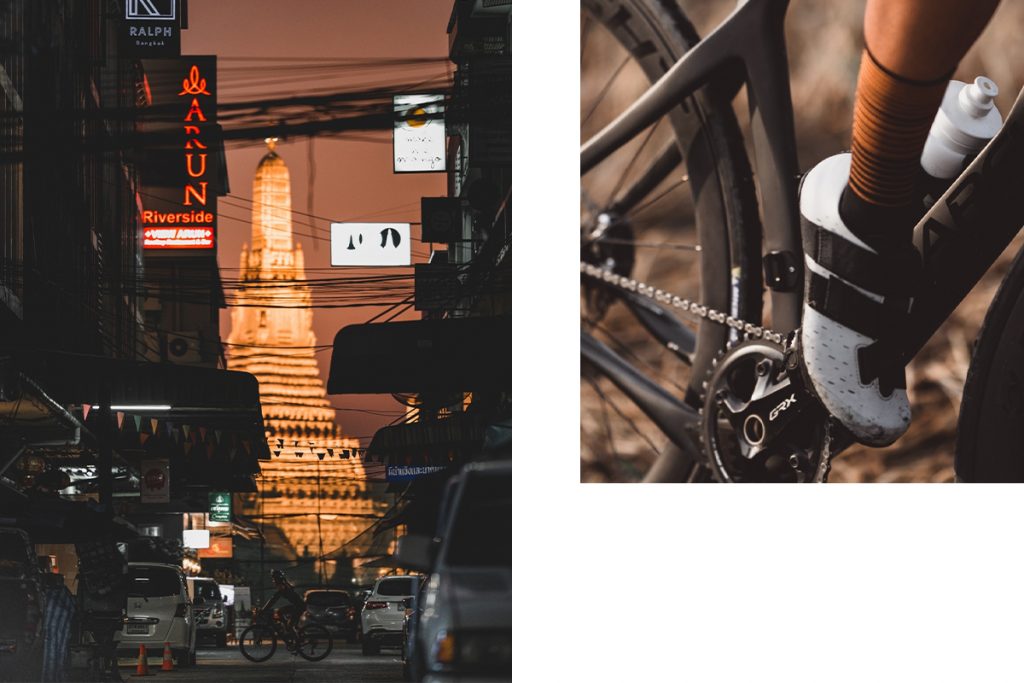
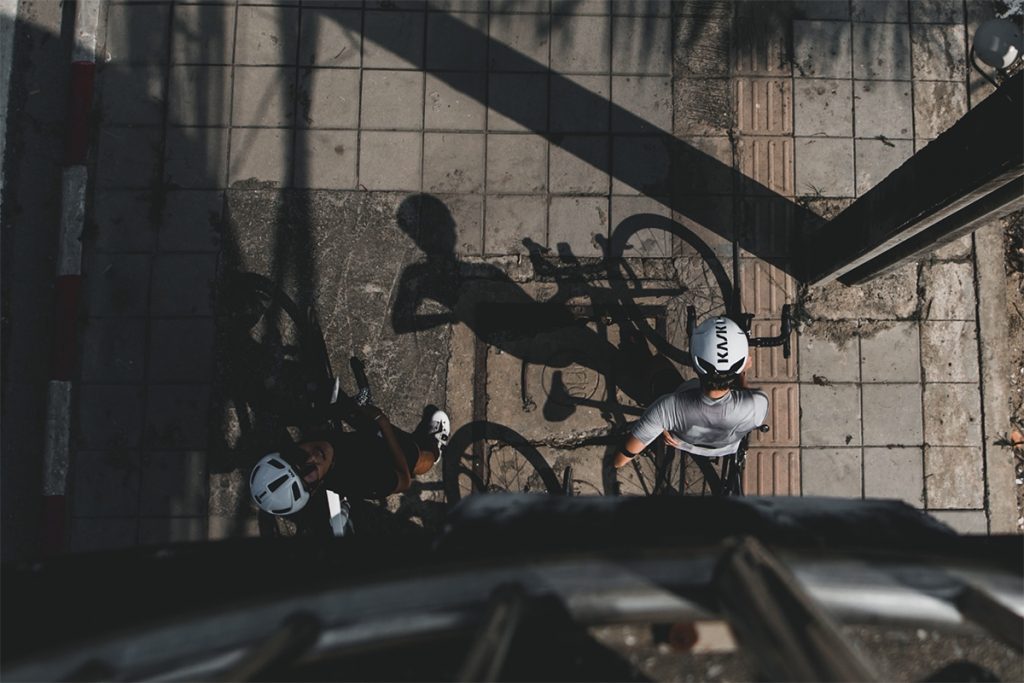
To those unfamiliar with fast-paced urban cycling, riding here can be hectic. Luckily, Bangkok offers plentiful parks and bike paths that give a glimpse of the quieter side of this South-Asian metropolis. But what about when riders want to get way out, to escape the city, ride off road and experience something more remote? Our friends at Procycle, a Bangkok-based bike retailer, may have just the right answer.
Spurred on by the temporary closure of Bangkok’s Skylane, an impressive and popular 24km public bike track on the south-eastern edge of the city, the folks at Procycle set out to find other options for quiet, exciting cycling routes, and if they could include some off-road riding, all the better. Well, after some research and two-wheeled exploration, a new ride was formed—one they like to call, Bangkok’s Hidden Gem.
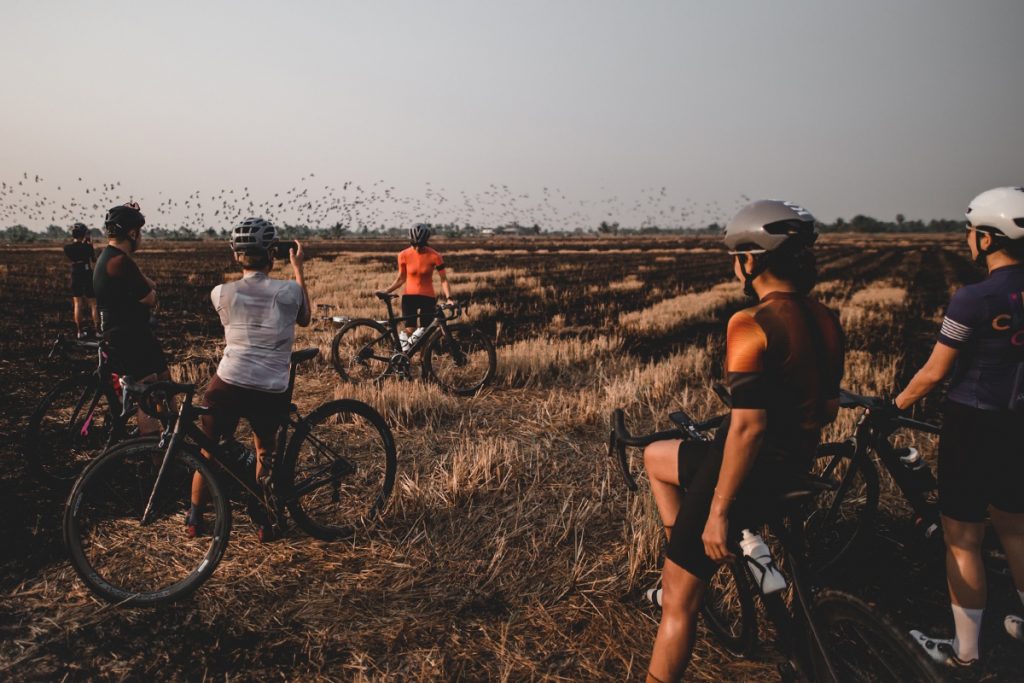
“With Skylane’s closure due to Covid, we had to seek out other routes to ride our bikes, and we found a great one. It is surrounded by rice fields in the Lad Krabang area, not so far from the Skylane. We can enjoy both Gravel and Road riding with almost infinite combinations of the loop. It is quite a spectacular ride within a short distance of downtown Bangkok.”
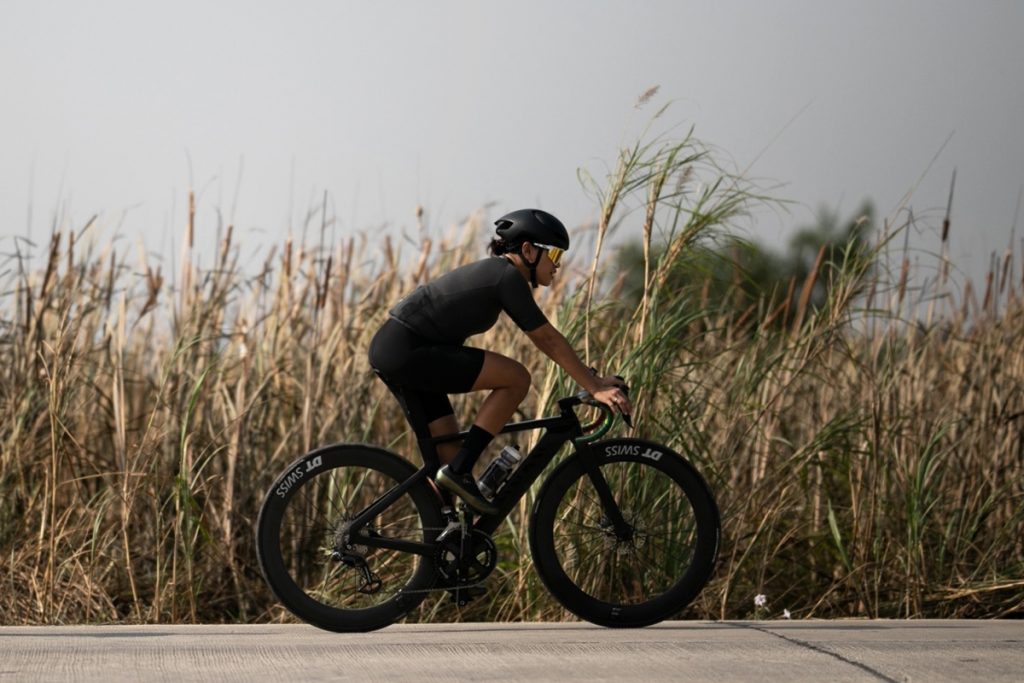
Easily reached and ripe for adventure, the Lad Krabang route lets riders test their off-road skills with steep pitches and shifting terrain as they take a break from what can sometimes be a monotonous training schedule. And while the country at large suffers no shortage of amazing, off-the-grid cycling opportunities, it’s nice for riders living in the crowded capital to have access to an exciting mid-week escape.
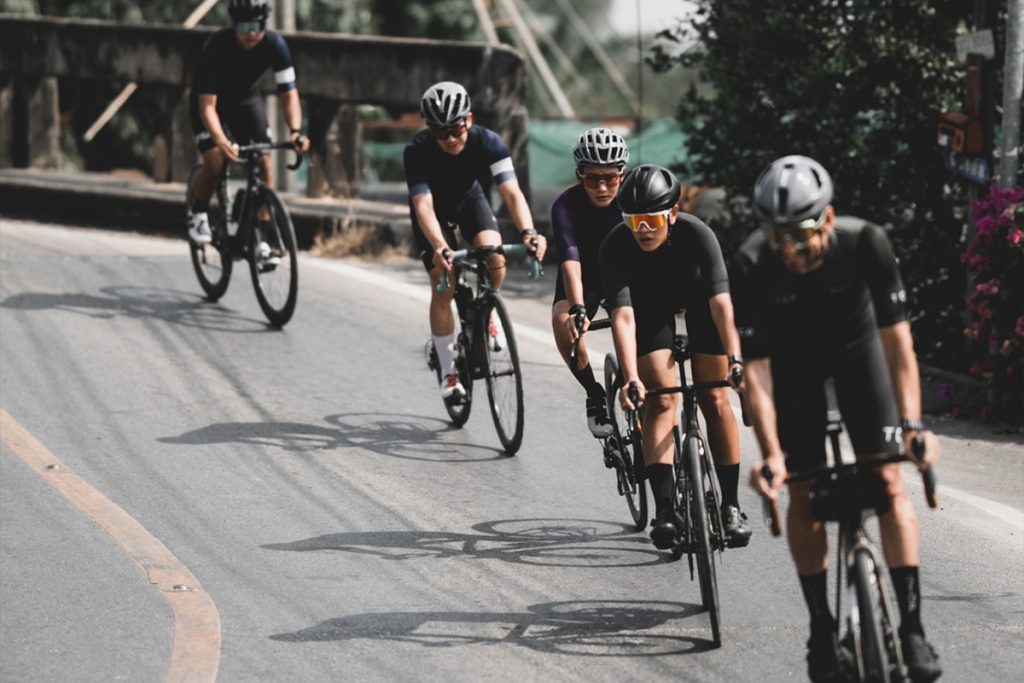
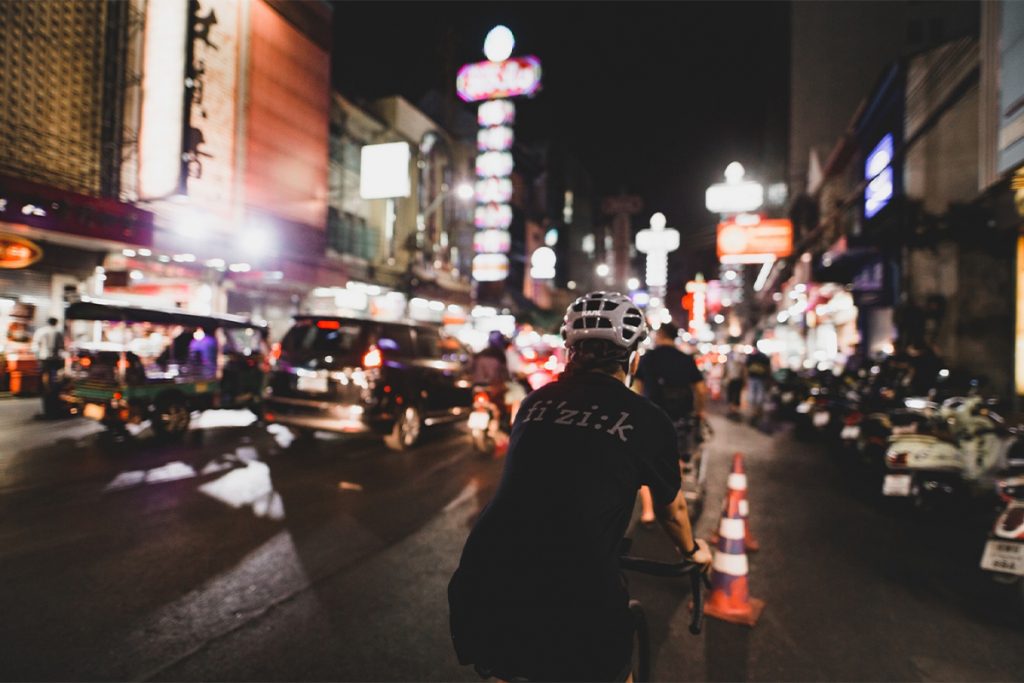
Of course, if you do decide to get out of the city and visit Lad Krabang to mix up your riding routine, remember that some traditions are important to uphold—like a post-ride coffee at any of the canal-side cafés as you make your way back into the vibrant, buzzing heart of Bangkok.
Photographs: ©m317sportsphotography
Face your fears—it’s advice easily given, yet difficult to follow, predicated on the idea that to overcome a phobia, one must be willing to engage directly with its source. Scared of heights? Go rock climbing. Don’t like the dark? Try spelunking. For Lyon, France-local Arnaud Manzanini, fear came in the form of riding in frigid temperatures. Confronting that apprehension would lead him far outside his comfort zone and deep into the winter cycling adventure of a lifetime.
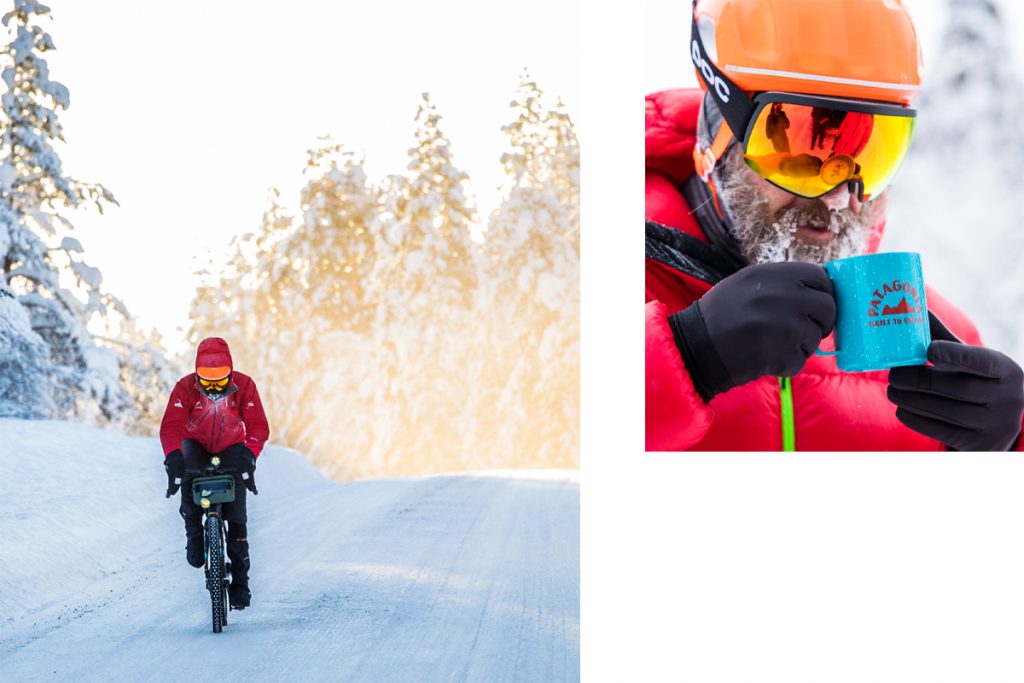
Arnaud leads a very busy life. As an ultra-distance cyclist, podcast host, race and event organizer and bike café owner, he may not always get to cycle as much as he’d like, but when he does find the time, Arnaud knows how to make the most of it, with one trip often serving as inspiration for the next.
“This most recent project was initially born during a Tour de France Randonnée last summer,”Arnaud recounts. While riding in France, he quickly found himself in a challenging situation that would stick with him upon his return home.
“While climbing the Col de la Bonnette, I became so cold that I had to stop. I was sure that I’d be unable to finish the climb. It was 6 AM, and I’d been climbing for four hours already. I was scared about being cold at the top and especially during the descent. I was in trouble. After several stops, I finally reached the top and got warmer after the downhill section. It was only a few months later that I realised I hadn’t actually been that cold. I was simply scared of growing toocold. From there, it became evident that to face that fear, I had to plan a true cold-weather expedition.”
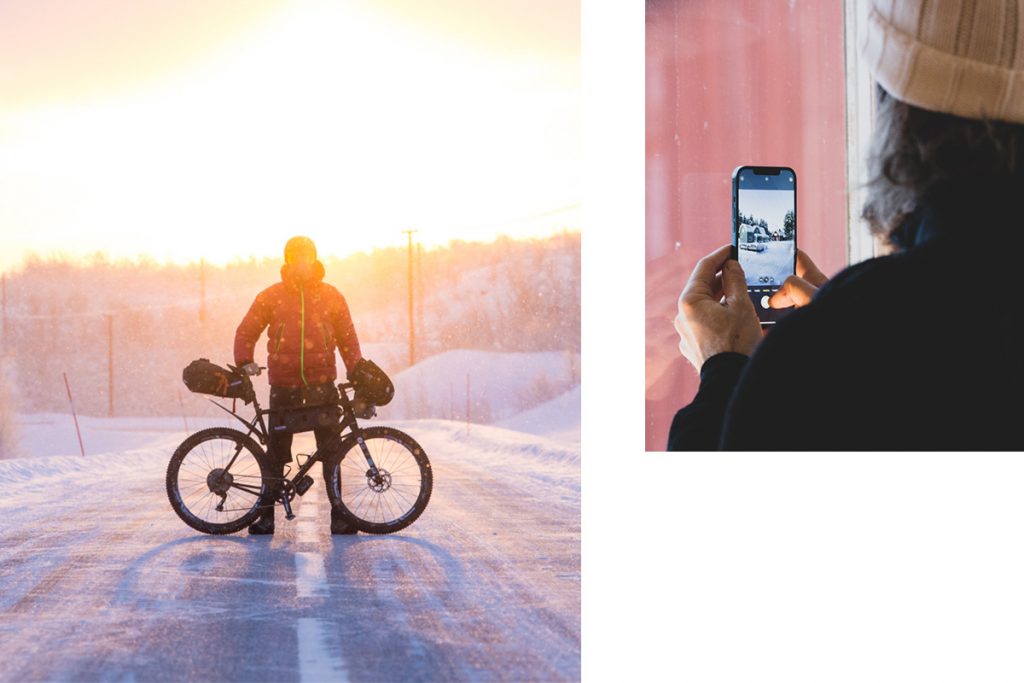
Organizing a trip and training while following pandemic protocols was not easy, but soon, Arnaud had his itinerary set: a three-day ride in the frigid Laponian Area of northern Sweden. Leveraging experience from past excursions and leaning into the help of friends, Arnaud built up a bike capable of handling the cold, paying special attention to the studded snow tyres, cold-weather chain lube and, being so far north, headlights, with the majority of the ride taking place in the dark. But preparation only goes so far; eventually the time comes to ride, and as Arnaud quickly learned, staying ready for the unexpected takes an ability to adapt.
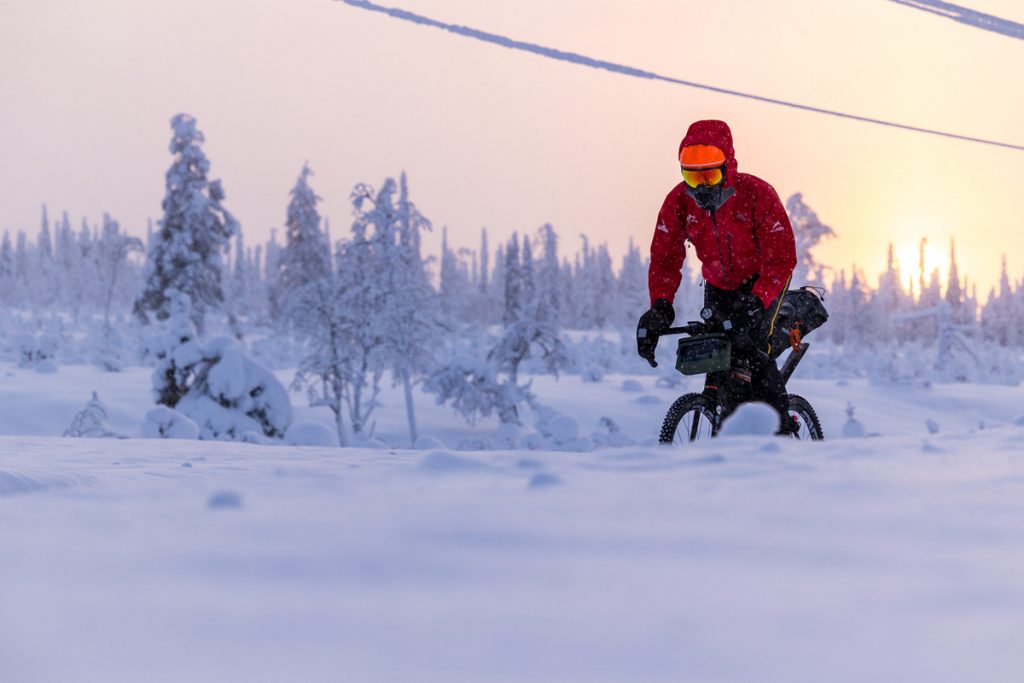
“My experience changed as the adventure unfolded. I had never ridden on ice before and soon realised how hard it is. My mind was focused on distance and looking for speed. That was a big mistake. After the first day, I felt like I had done a 600km ride. I pushed too far beyond my limits and was scared I wouldn’t be able to continue. I was so exhausted that I couldn’t eat or drink. I was prepared to suffer and to be in trouble, but to be honest, I did not expect it to be that hard.”
Changing strategies, Arnaud approached day two more cautiously—a plan that paid off, despite the constant struggle of cycling in sub-zero temperatures.
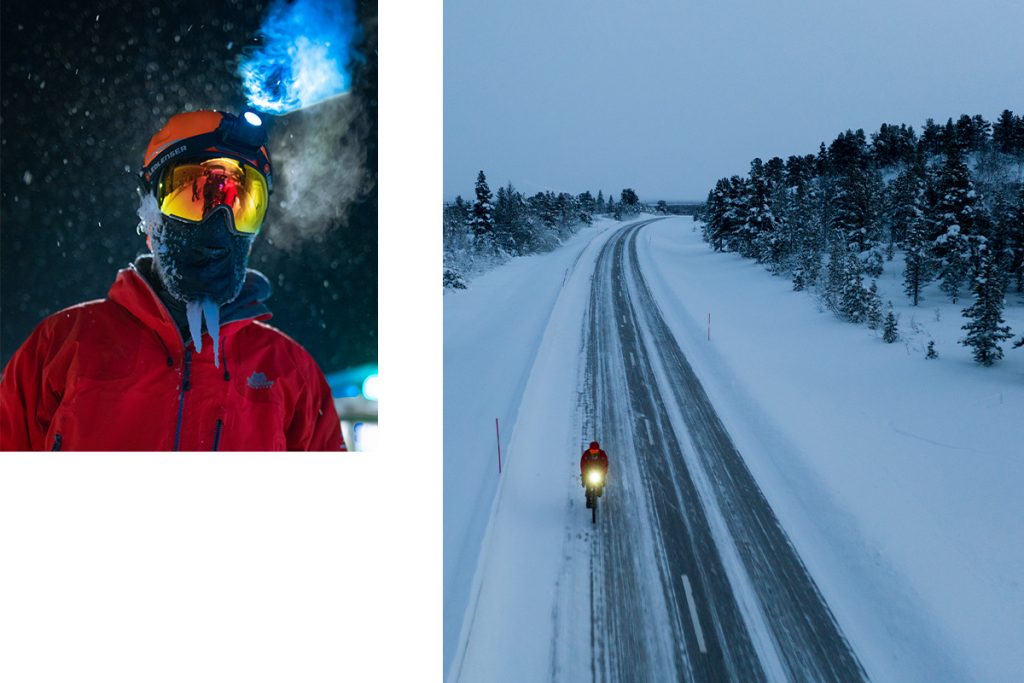
“The second day was an improvement. To manage my energy, my average speed fell to around 16-18 Km/h. Even so, riding at 16 km/h took the same effort as a typical 30km/h ride in regular conditions. My body came down to burning 600 Kcal/hour, and I was able to complete 170km on the second day. It was still very hard, but with a lower speed, I finished the day in pretty good shape.”
Now familiar with his surroundings, the final ride of the trip would punish Arnaud and push him to fight the source of his fear that brough him so far in the first place. Day three would be very, very cold.
Yet putting mind over matter, Arnaud pedalled on: “If I had to sum up the day in a word, it would be focus. I was focused on my feelings, on my body and how to manage the type of cold that can kill me. There is a danger zone, my hands or my feet could freeze, causing irreparable damage. We entered the Arctic Circle, and my body switched to a survival mode. My vision grew smaller. I could only see the road in front of me, nothing else. I forgot to eat or drink. My mind was only aware of how my body felt. My brain started sending me tons of messages to make me understand that this is not a normal place for a human, the temperature is so low and presents a real danger.”
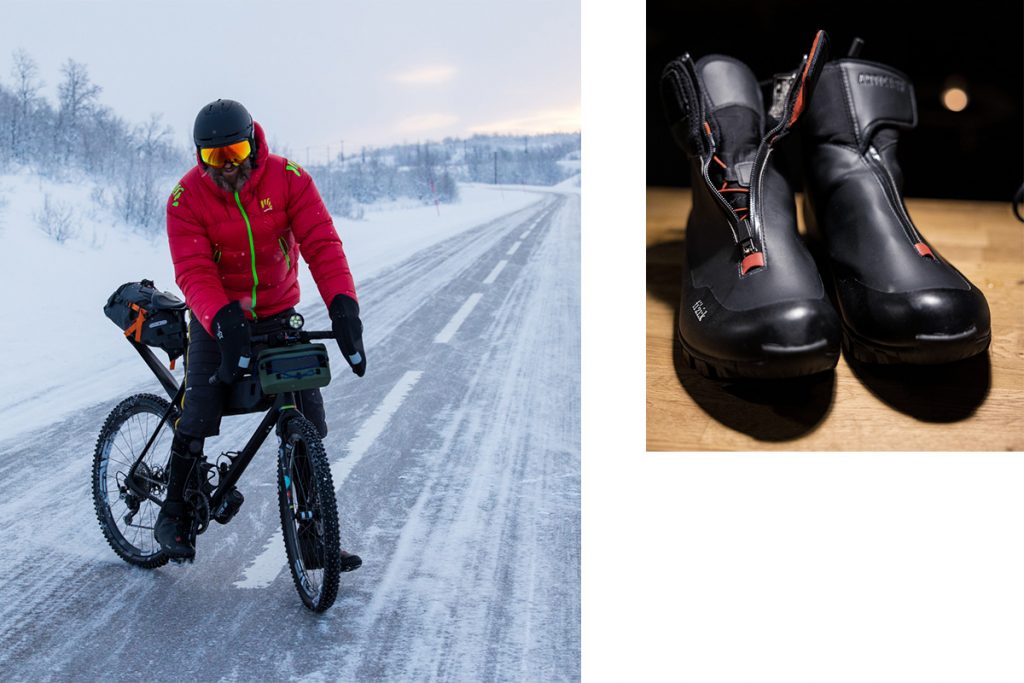
Facing the type of cold he had once only feared, Arnaud came out the other side of his time in Sweden with a healthy respect for the elements and a better understanding of what it means to push beyond personal barriers. Now back in France, he’s been slowly reflecting on the trip, and just like on his adventure, it’s a process best done at his own deliberate speed.
“I hardly ever react just after an expedition; I need some time to realise exactly what I’ve done. When I finished the Race Across America, I needed several years to admit that I’d done something unusual and insane. In my mind, I was fully prepared for that race, and I only did what I’d come for. But this one is quite different. I physically felt how hard it is to ride 170km in -45°C. I brought my body and my brain to the danger zone, and I discovered a survival mode. It’s not about pride, but more a satisfaction to have discovered a new state. It is an introspective adventure, there was no race, competitors or record. It was just me, against the elements and my thoughts.”
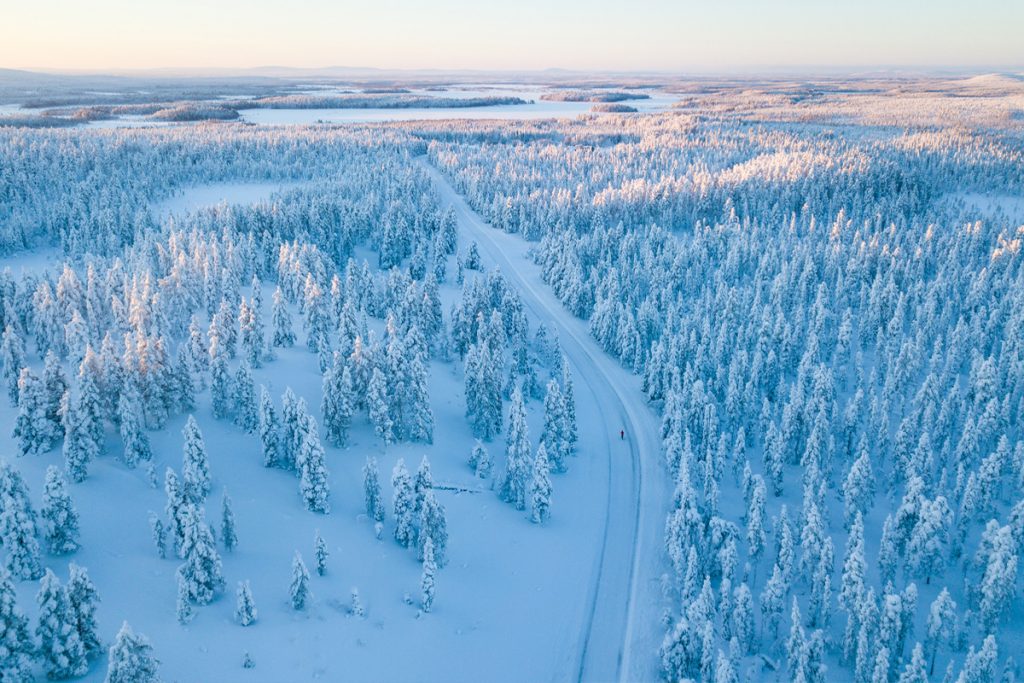
As for anyone apprehensive about planning their own grand adventure, Arnaud has some parting thoughts: “You can do it, get prepared, book your plane ticket and live it. The logistics are not that huge, and an expedition does not need to cost tons of money. It’s very important for me to show that trips like this are not only for a few adventurers on earth. You can cover continents or ride across the USA from the Pacific to the Atlantic. You can cycle more than a 1,000km in a deep cold though the Arctic Circle. Just jump on your bike and go—adventure is just outside the door.”
On the Canadian West Coast at the southernmost point of British Columbia, Vancouver’s North Shore is located on the traditional territories of the Squamish and Tsleil-Waututh Nations.
This spectacularly beautiful setting is the birthplace of modern mountain biking as we know it and the host to a unique off-road playground.
Here, just 15 minutes from the hustle and bustle of downtown Vancouver, the three North Shore mountains – Cypress, Fromme and Seymour feature an unending range of freeride trails, singletrack and downhill to enjoy, whatever the season.
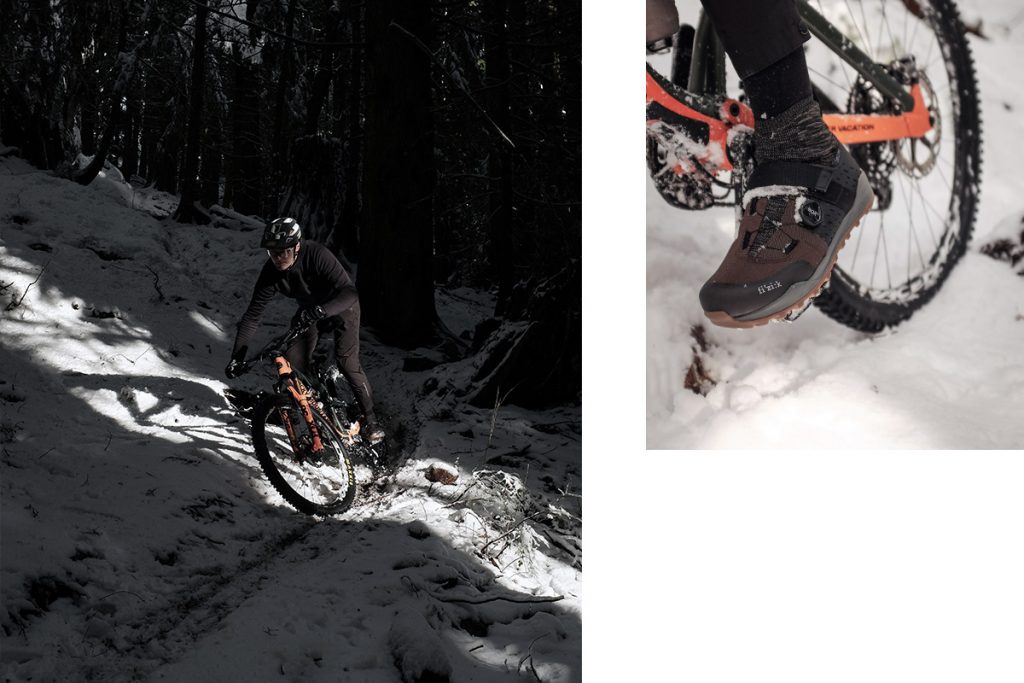
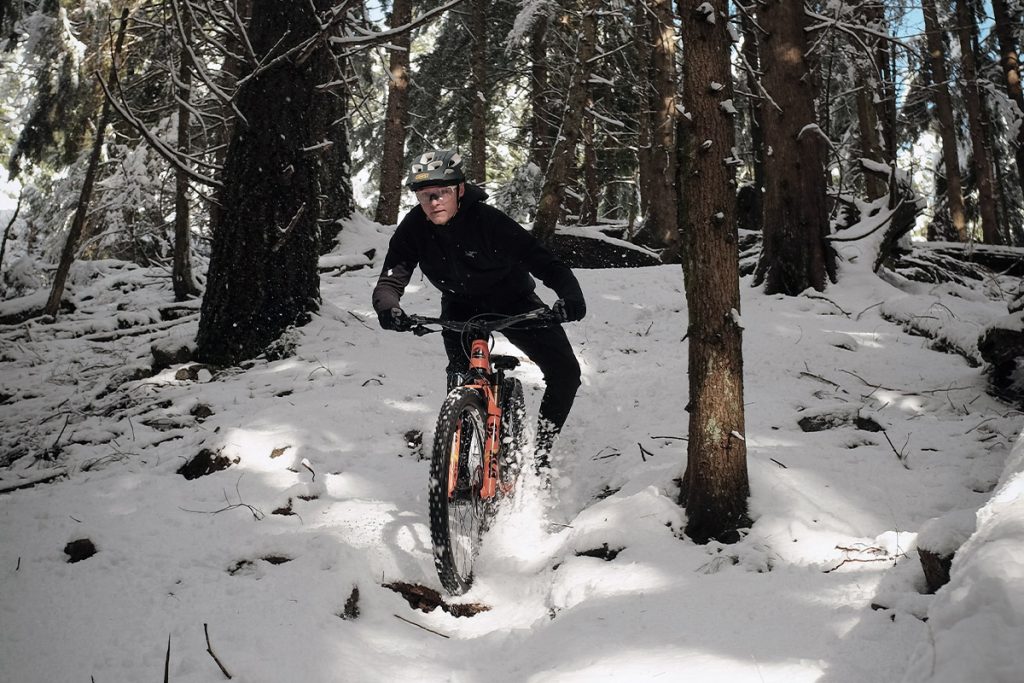
Changeable weather conditions, exposed tree roots and a notable forest stillness make for a powerful riding experience that always feels both wild and restorative. Local riders Kyle Scully + Nick Geddes have come out on a winter ride to explore the trails and rediscover the epic mountain wilderness.
The icy chill in the clear air contrasts with the soft silence of the snow-covered trails that invite the rider to test his skills. On the technical downhill sections, Kyle drops off the huge rock boulders that surge out of the forest hillside, interspersed with winding cross-country singletrack and a seemingly never-ending series of natural obstacles. There’s a familiar vibration as they ride onto the old-growth lumber rideways, jumps and bridges, spanning fallen trees and ravines.
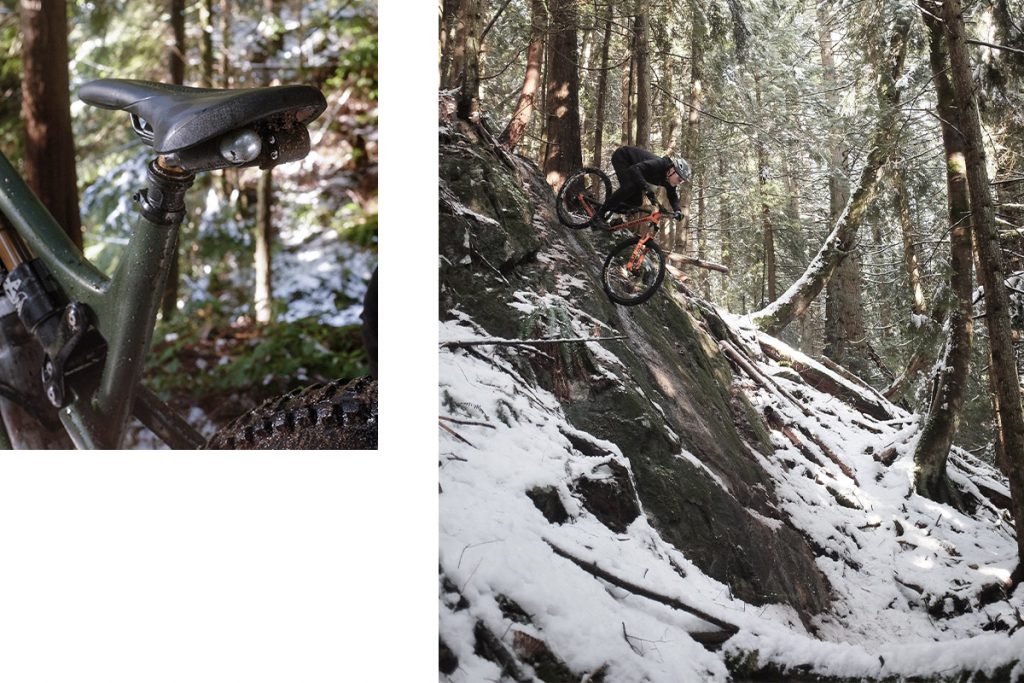
The North Shore winter trails demand respect and require heightened concentration over the icy sheen of the hard rock, slippery wood surfaces and snow berms that challenge both rider and equipment. But as the snow retreats against the backdrop of the watery sunshine, you can’t help but be struck by the immensity and natural energy of the mountain.
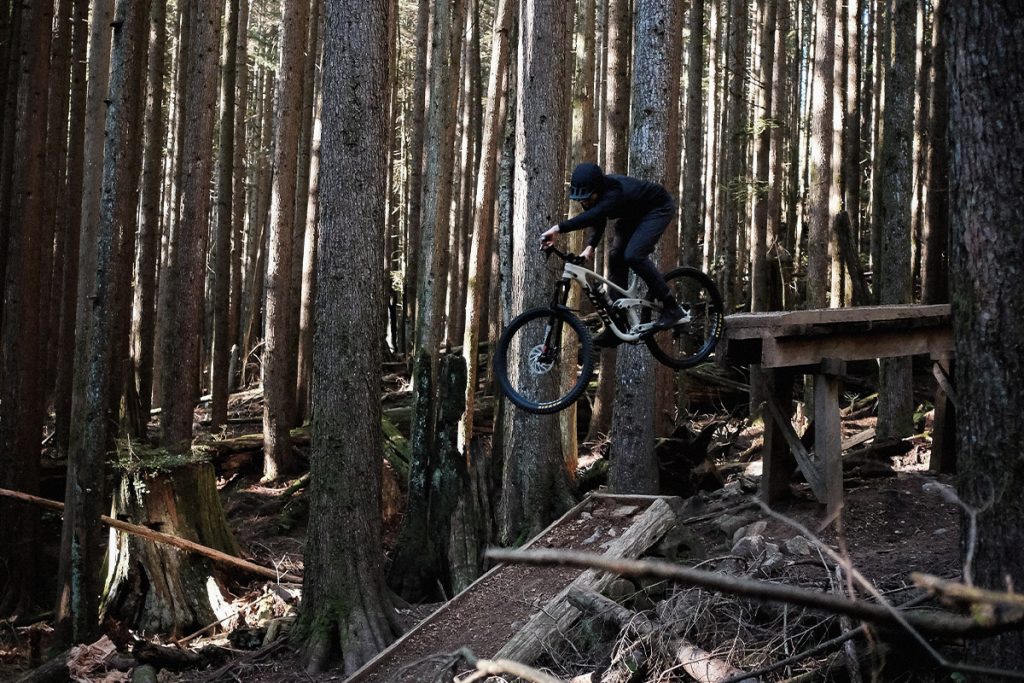
Photographs: ©kylescully
As cycling moves further off roads and into adventure, culinary exploration grows in kind. Long gone are the days of being limited to chewy bars and sugary gels—carry a homemade treat or create a feast around a campfire instead. Even on quick morning trips, it’s not uncommon to pack a small stove, a bag of beans and enjoy some #coffeeoutside. But who ever heard of #comtéoutside?
Giving a decidedly European twist to the American trend of enjoying café au fresco, riders Maxime Poisson and Pierre-Charles Flipo loaded their bikes and headed into the snow to enjoy an afternoon of fitness, fun and a famous French cheese.
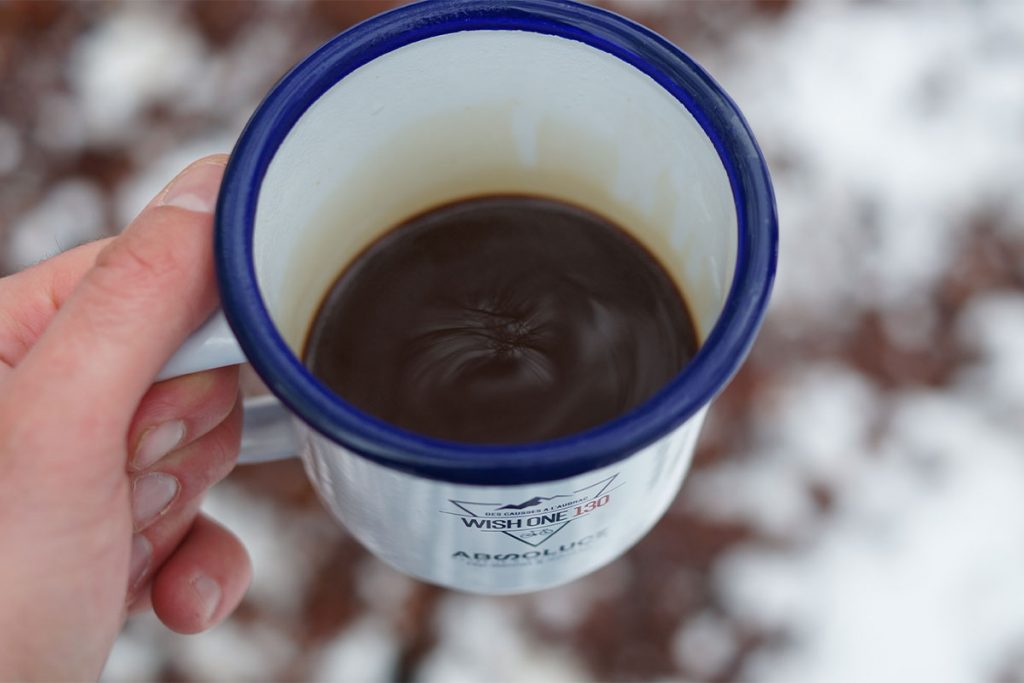
“There are many reasons to go to Jura: Riding the roads and trails deep in the forests, of course… skiing in the mountains, as well… but have you ever heard about Le Comté?”
The Jura region of eastern France, much like the country at large, is replete with good wine, great food and world-class cycling. Situated near the Swiss border, this mountainous locale attracts visitors to its rolling vineyards in summer and ski slopes when snow falls. Year-round, however, the region enjoys another big draw, and it calls to fromageophiles from around the planet: the famous Comté cheese.
“A Few days ago, we decided to go cycling on the snowy roads of Jura,” Maxime recounts. “With warm clothes, fizik winter overshoes, good tyres, some bread, snacks and all the stuff for an Italian coffee, we were ready to face the freezing weather of the area between Poligny and Champagnole.”
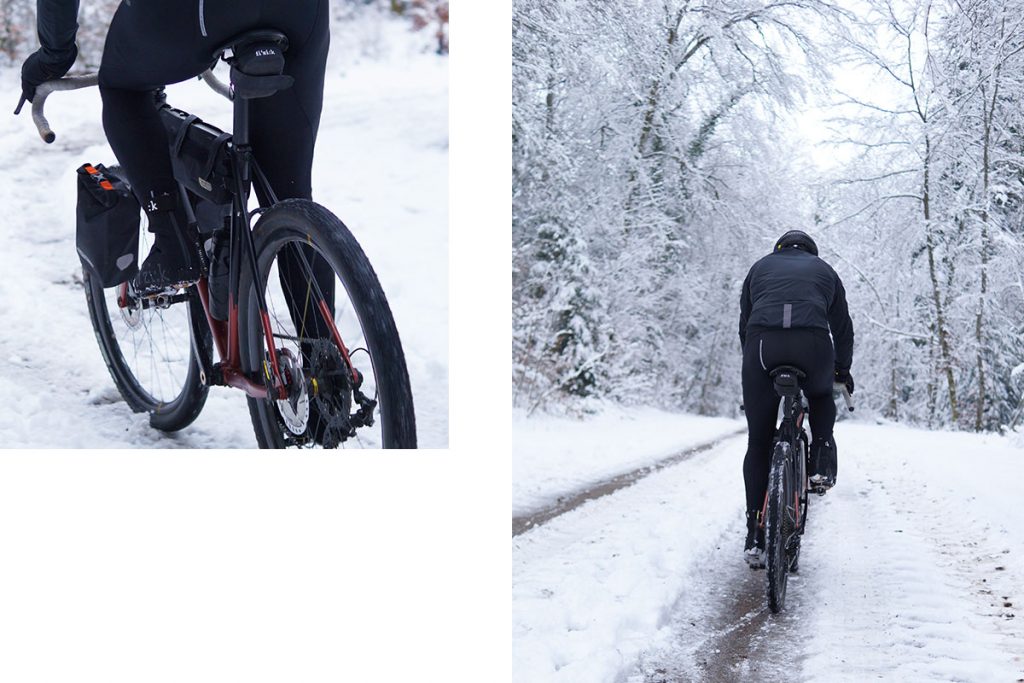
Starting in Poligny, the pair first had to make a quick stop before venturing onto the surrounding snow-covered roads:
“In this small, charming city, there is the largest choice of Comté shops in the area, so we decided to stop at a nice-looking shop in the centre of Poligny,” Maxime explains. “How could we resist this cheese? It will be perfect as Ravito!” (Shorthand for Ravitaillement, or food resupply during a race)
Sufficiently stocked with a two-year-old cheese and plenty of stoke to hit the road, Maxime and Pierre-Charles set off into a winter wonderland.
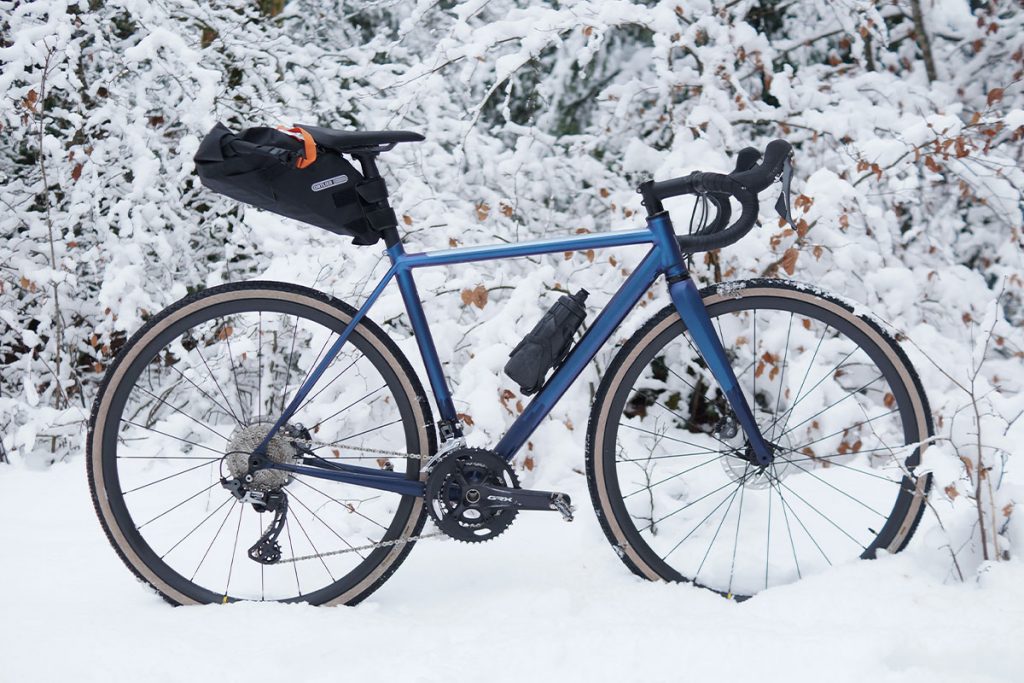
“Riding on snow and ice is not easy. But the landscape was unreal, the space was full of silence, and we could imagine the nice tracks sitting just below the snow.”
As the slippery roads began to take their toll, it wasn’t long before the friends started dreaming of more than snow-free streets.
“The effort, the cold and concentration all burn calories. And when you have Comté on your mind, you start to feel like you’re starving really quickly. Fortunately, we found a perfect place to stop and start our lunch—a crossroad with a bench to welcome us,” Maxime remembers fondly. “What a pleasure to eat fresh bread with sausage and Comté. A raspberry yogurt for dessert followed by a great coffee to warm our body and our hands, and we were ready to go again.”

Back on the road, accompanied by full stomachs and the soft crunch of snow, Maxime and Pierre-Charles slowly made the return trip to town in the fading final light of the day.
“Life now seemed easy on our bikes, and we no longer felt the cold, but it was time to go back home. Was the ride too short? Certainly! Was it worth it? Definitely! After all, isn’t that what we’re all looking for: a nice place to ride your bike with a friend, eat local food and enjoy a perfect coffee!”
Maxime Poisson (@lalmax) is a cofounder of @wishonecycles, Pierre-Charles Flipo (@scops.cc) is an artist and avid cyclist. You can follow their continuing adventures on Instagram.
As part of our Phil Burt Tutorial Series, we are joined by leading Physiotherapist at British Cycling and bike fit expert, Phil Burt, to examine the differences in saddle design and how they apply to finding the right fit for every rider. For our third instalment, we are exploring the all-important decision that follows making the right saddle choice: dialling in saddle position.
So you’ve been through all the steps of selecting the right saddle, choosing the ideal surface, size, discipline and design for your body type and style of riding, and you’ve found the perfect saddle. But there’s still a critical step in finalising your ride—setting saddle position. After all, even the best bike saddle is only as good as its position on the bike.
In setting saddle position, there are a few crucial considerations, with each dependent on the individual rider, bike and style of riding. Read on to learn about them all.
STRAIGHTNESS
The first adjustment when fitting any bike saddle is also the simplest: is your saddle straight? No matter the bike, rider or discipline, every bike saddle should run parallel to the top tube, pointed straight ahead towards the handlebars and not skewed to one side or the other. On bikes featuring aerodynamic seat posts that fit proprietary seat tubes, this step can be skipped, as these bikes don’t allow for saddle twist.
But on traditional bikes with round seat posts and tubes, adjustments can be made by simply loosening the seat binder bolt and gently turning the saddle until it’s perfectly straight, using your bike’s top-tube to gauge straightness, then retightening to manufacturer recommended specs when finished.
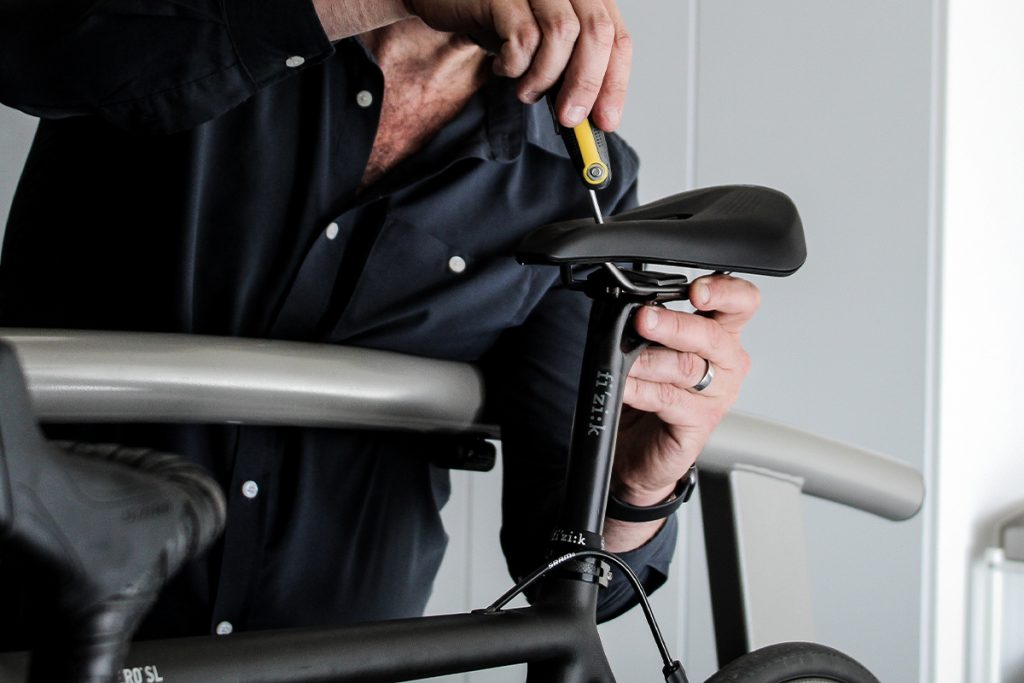
HEIGHTH
The next setting to consider is saddle height, often adjusted at the same time as straightness. Put simply, saddle height means the distance between the top of the saddle and the bottom of your pedal stroke. Set your saddle too low and the result will be an inefficient pedal stroke and wasted energy; set it too high and you risk overextending knees and hips and an uneven, uncomfortable pedal stroke.
When setting saddle height, a good starting point is to aim for a very slight bend at the knee when fully extended to the bottom range of the pedal stroke. From there, minor adjustments can be made to find the perfect fit. Or, visit your local fizik dealer for help in fine tuning.
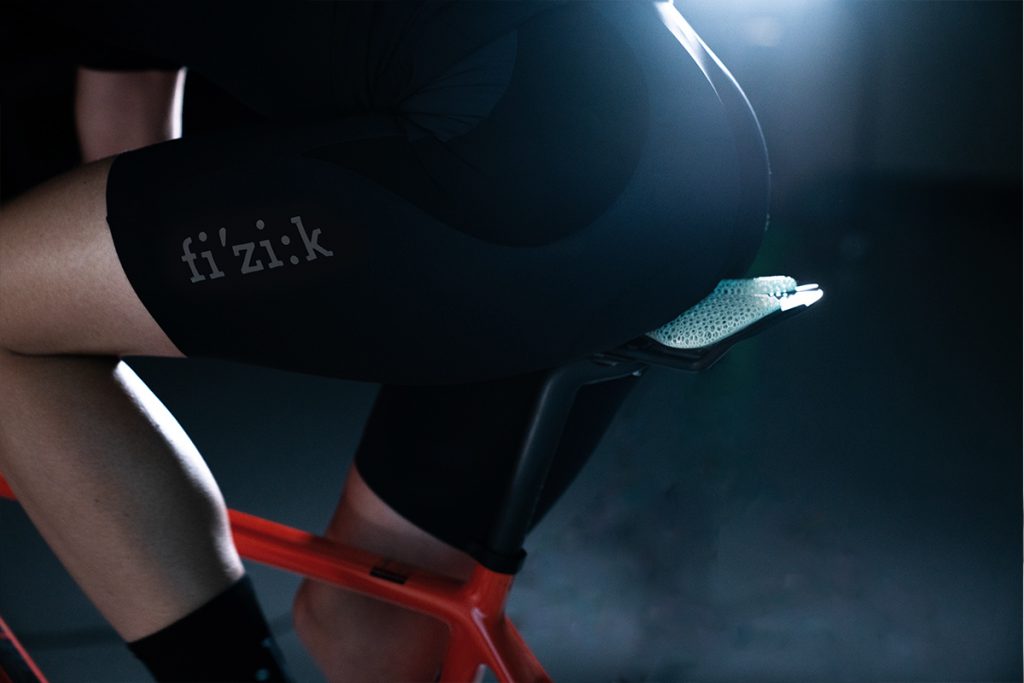
TILT
Saddle tilt, or the angle at which your saddle sits in relation to the ground, is another important consideration. How saddle tilt is adjusted depends on your specific seat post; finding the right angle depends on you. Most riders will favour a neutral saddle tilt, with the surface of the saddle parallel to the ground, although riders who frequently adopt forward, aero riding positions may prefer a bit of downward tilt. Saddle tilt adjustments are typically minor, with small changes having potentially large impacts on comfort and performance.
A small adjustment to downward tilt can relieve unwanted pressure, but angle a saddle too far down and it becomes hard to maintain a planted position—and can even shift weight too far forward, leading to hand numbness and upper body fatigue.
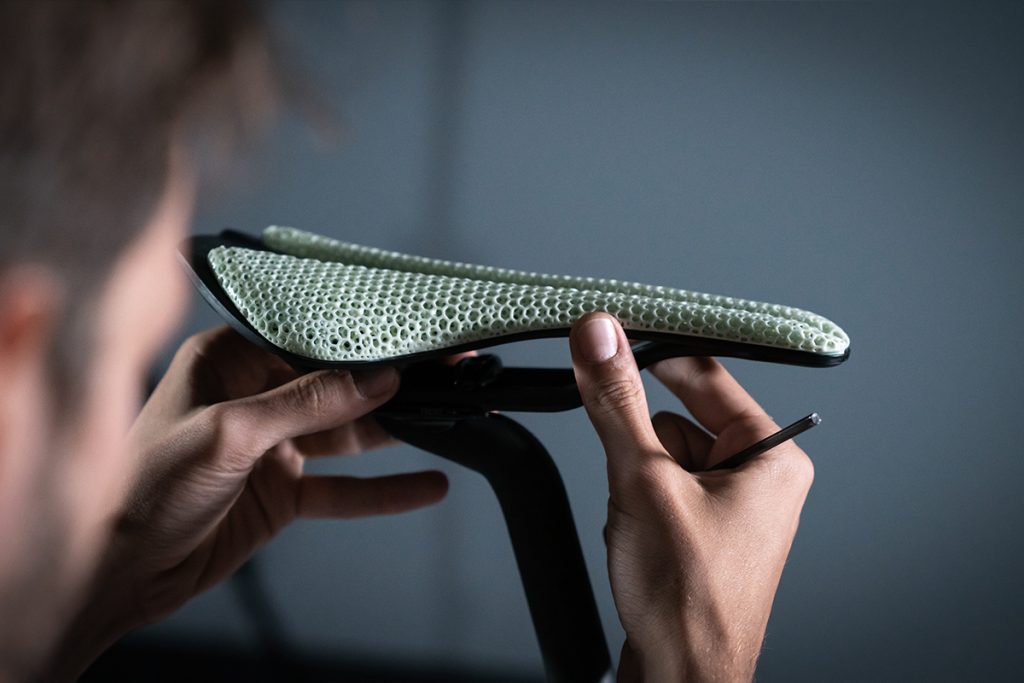
SETBACK
The final, and perhaps most difficult, saddle adjustment is setback. Saddle setback refers to adjustments to the saddle’s forward and aft positioning, moving the saddle along its rails either towards the front or back of the bike. Saddle setback plays a major role in establishing a healthy pedal stroke, with overly forward positioning often leading to knee pain, while saddles set too far back result in poor bike fit, inefficient pedalling and difficulty maintaining a comfortable position on the bike.
Setback adjustments should take into consideration knee position in relation to pedal stroke, as well as overall reach from saddle to handlebars. Dialling in the perfect placement can take a bit of time and several adjustments—a process that can be made easier through the help of a bike fit expert.
Lastly, keep in mind that an adjustment to one of these four saddle position factors can often impact the others. Additional downward tilt, for example, can increase saddle height while adjustments in saddle height can impact setback.
To learn more about saddle position and finding the right setting, explore the following video as well as our entire series of How-To Tutorials for more tips on optimizing your favourite ride.
When your significant other asks if you want to go on an adventure, how do you react? Do you feel stressed? Worried about money, where to stay and how to get there? Or, do you welcome the idea and get excited for another adventure? These questions floated in Melissa Martucci’s mind as a much-needed week away from work rapidly approached. Fortunately Melissa and her husband Frenk share the same attitude towards adventure, and the question is never if but where they’ll go next. As Melissa puts it: In fact, the way the two became one was a journey in itself. Frenk, an Italian into fixed-gear racing, and Melissa, a California-based chemistry teacher, took turns flying to each other’s respective homes for bike adventures, growing closer through each successive trip. So with autumn break finally upon them, Frenk and Melissa packed their car with bikes and rolled out from their home in L.A. towards the Valley of Fire in Nevada, the first stop on their next adventure. “We made it to the Valley of Fire with one hour until sunset,” Melissa recounts, “I stood in awe at this road carved through the rocks. It was like standing at the passage to a different era. And, like a kid at the playground, while I was setting up the camera Frenk took off cycling.” After a quick exploration and, with light quickly fading, a handful of photos, the pair rolled on towards Panguitch, Utah, a small town not far from the popular Bryce Canyon National Park that would act as base camp for the next few days of outdoor adventures. Up before sunrise the following morning and greeted with temperatures well below freezing, Frenk and Melissa started the day with a warm-up hike in the nearby national park. Kitting up for the cold, they headed next for Red Canyon, hopping on their bikes to roll along the Red Canyon Bike Trail. “Frenk and I were so busy marveling at the rock formations and taking pictures that we didn’t realize we were losing sun,” Melissa remembers. “Cold and tired, we went back to the Airbnb to recharge and sip hot chocolate!” The next morning, the pair once again climbed on their saddles for another day of two-wheeled exploration, riding around the historic district in Panguitch, then remounting their bikes atop the car for a scenic drive to Horseshoe Bend on the state’s southern border. “Along the way, you are able to view the mesas of the Grand Staircase in Escalante from the car. The land formations were dramatic and moody in the morning sun, showing off their deep red rocks and soil.” As they parked the car a mile from the viewpoint at Horseshoe Bend, Melissa and Frenk decided to save time by cycling along the trail leading to the scenic overlook, but they’d managed to accidentally overlook one important detail: “We had unknowingly missed the ‘No Bikes’ sign and were gently reminded by staff. As other onlookers stared at us, we snapped a few quick photos and returned the bikes to the car.” Fortunately, the nearby Rim View Trails were open to cyclists and provided the pair with stunning scenery, as well as a chance for some off-road riding. “The path is made of red dirt and rock,” Melissa explains. “For someone who is learning, like me, it was a fun way to get introduced to gravel riding.” Riding for as long as the sun would allow, Melissa and Frenk ended this adventure like many others before it, thankful for the time spent together and looking forward to the next one. “It’s never easy lugging bike equipment to our various adventures, but it has always been worth it. I couldn’t be more thankful that I found someone who enjoys the outdoors and exploring as much as I do. And because of our deep connection to cycling and adventure, Frenk and I get to see the world from a different perspective. So if anyone ever asks you, ‘Do you want to go on an adventure,’ always say yes. And bring your bikes, too.” Photographs: © @frenkmartucci, @_mizmissy_ As part of our Phil Burt Tutorial Series, we are joined by leading Physiotherapist at British Cycling and bike fit expert Phil Burt to examine the differences in saddle design and how they apply to finding the right fit for every rider. For our second instalment, Phil follows up on his introduction to saddle surfaces with a look at other factors that affect perfecting saddle choice. As any rider knows, you wouldn’t take a lightweight carbon road bike on your favourite MTB trails. Likewise, you wouldn’t get dressed for a deep winter ride in the middle of a summer heatwave. As in life, in cycling there’s a right tool for the job, and choosing the best component for a particular purpose depends on a variety of factors. Naturally, the same holds true for selecting the right saddle. There is no one-saddle-fits-all approach when it comes to saddle choice, and finding the best one for your bike will depend on where, how and what you ride. Whether you easily find comfort on any saddle or are more susceptible to the subtle differences in design, all riders can benefit from the performance advantages of selecting a saddle specific to the the type of riding. A stiff, responsive road saddle might perform perfectly across smooth tarmac, but might not ne optimal on singletrack. Similarly, a strong, downhill MTB saddle can certainly handle the rigours of road riding, but isn’t intended for hour after hour in the seated position—and likely carries a bit of extra, unnecessary weight, as well. Pick a saddle for the specific discipline you prefer as an excellent starting point towards narrowing saddle choice. How you ride can depend on a number of personal and physiological factors. Are you an aggressive rider, or do you favour a more endurance riding posture? Are most of your outings short and explosive, or do you prefer hour after hour of steady effort? What is your weight, height and body type? Are your sit bones wide or narrow? These are just a few of the considerations that can affect overall saddle choice. It’s important to weigh each carefully and seek the help of bike fitting experts or your local fizik dealer for additional assistance. Lastly, the type of bike you ride greatly influences overall saddle choice. Beyond discipline-specific decisions, individual bike geometry can also play a role in determining the best saddle selection for you and your bike. For example, if your favourite bike is built for upright riding, finding a saddle with appropriate sit bone support becomes important. If your bike’s geometry is more aggressive and aerodynamic, perhaps pressure relief takes priority. Carefully considering which bike a new saddle is intended for should play an important role when making your next saddle selection. To explore the subject of saddle selection further, enjoy the following video with Phil Burt, and stay tuned for upcoming videos in our ongoing series.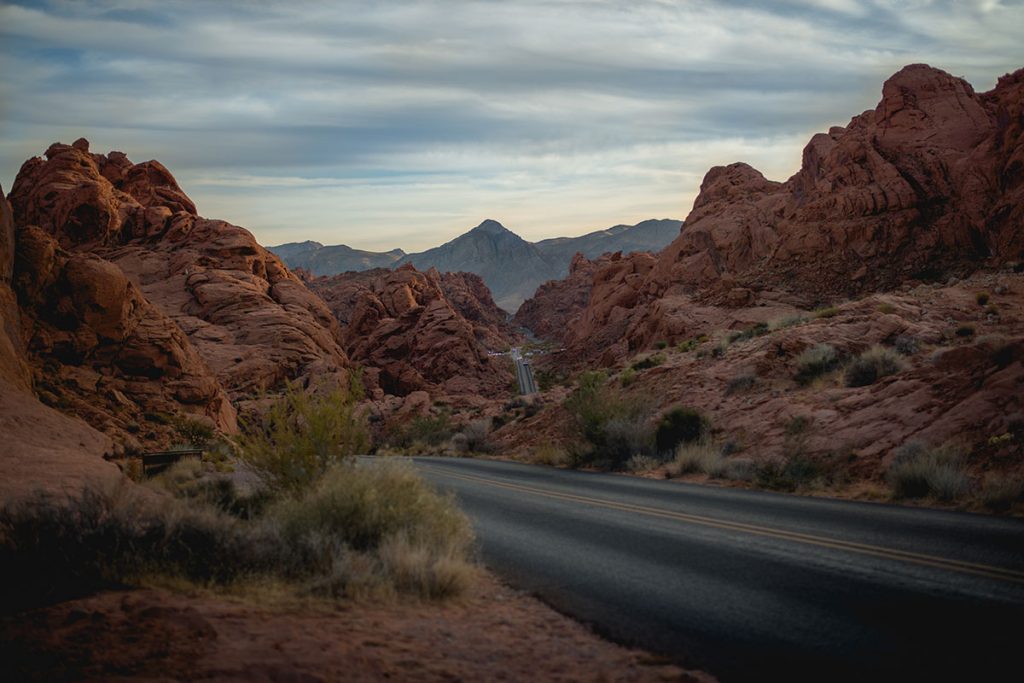
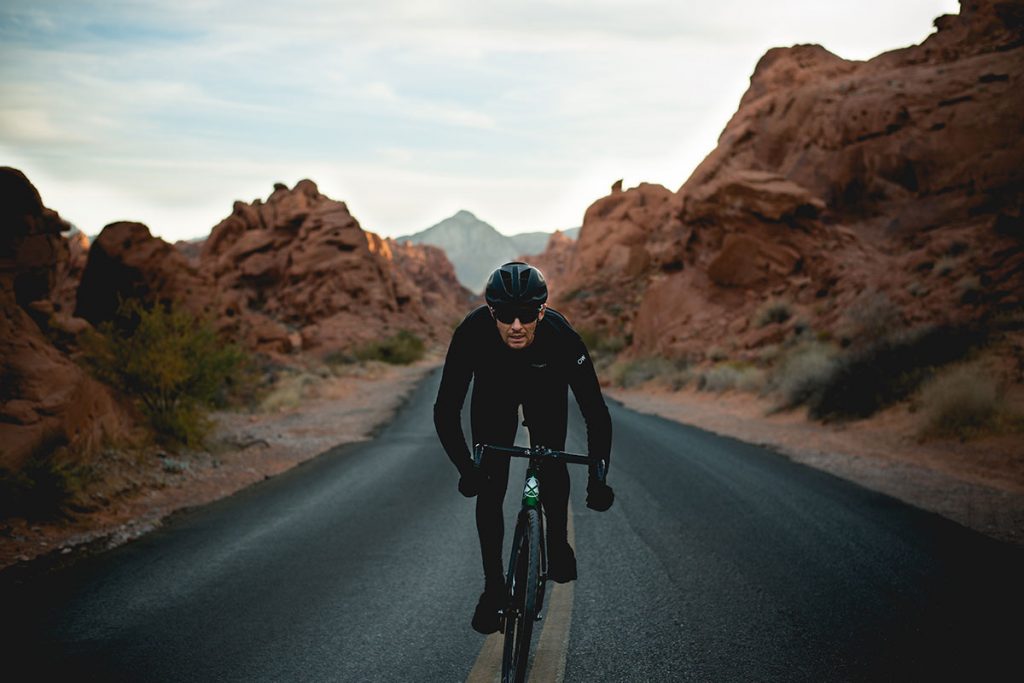
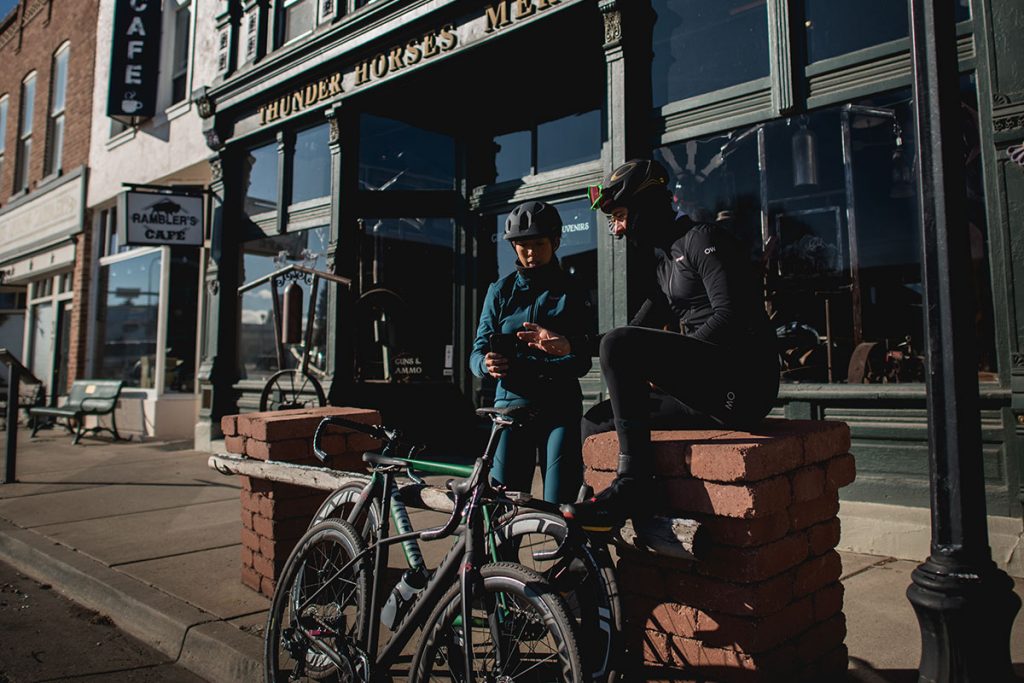
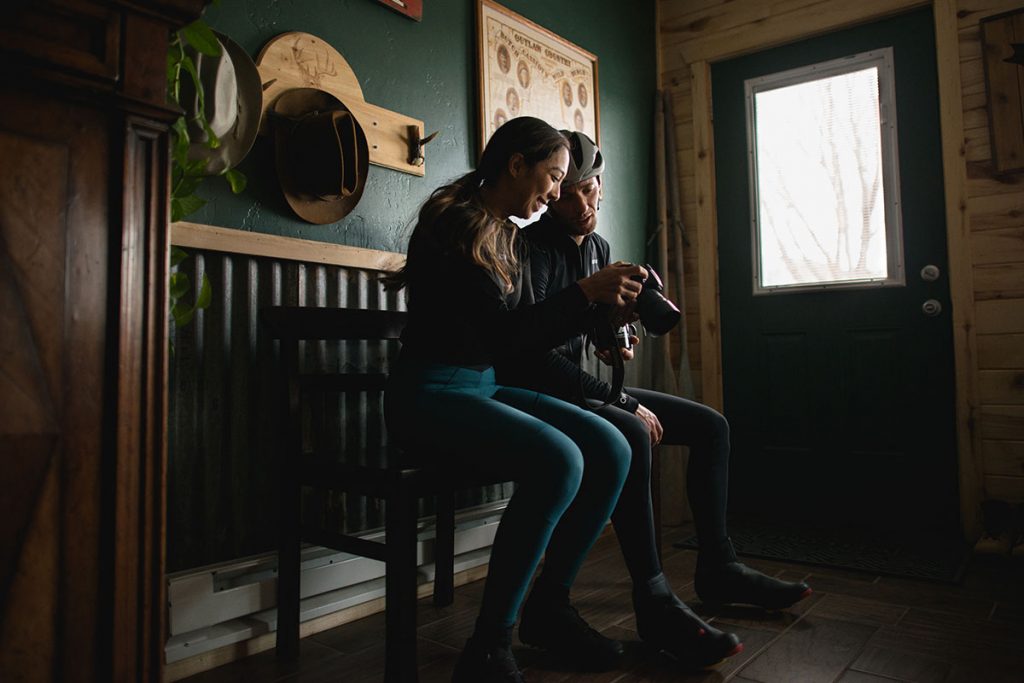
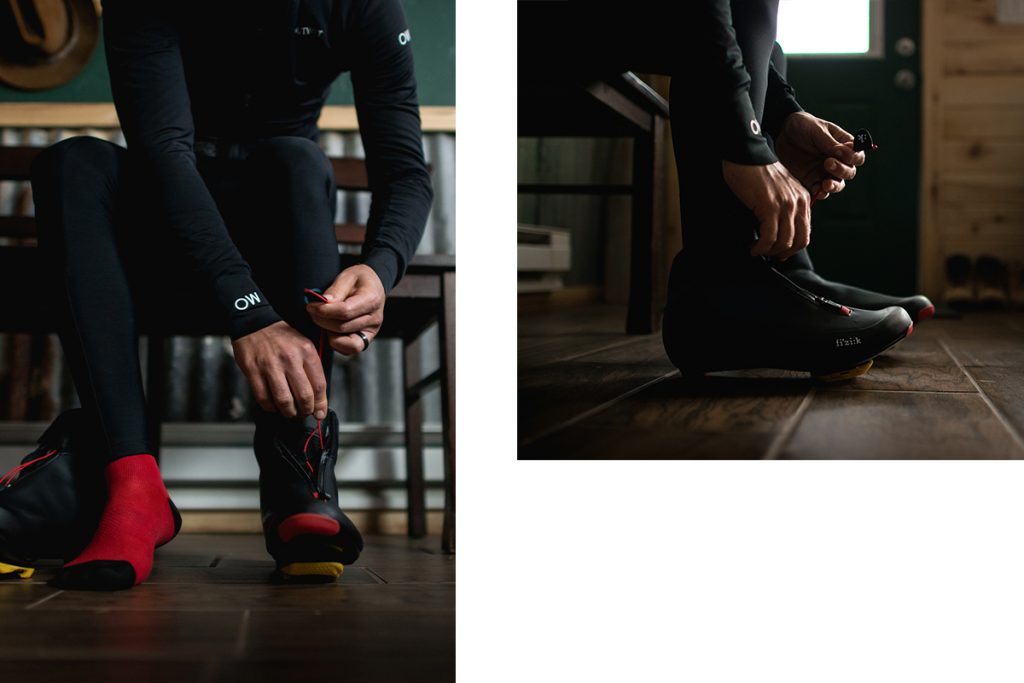
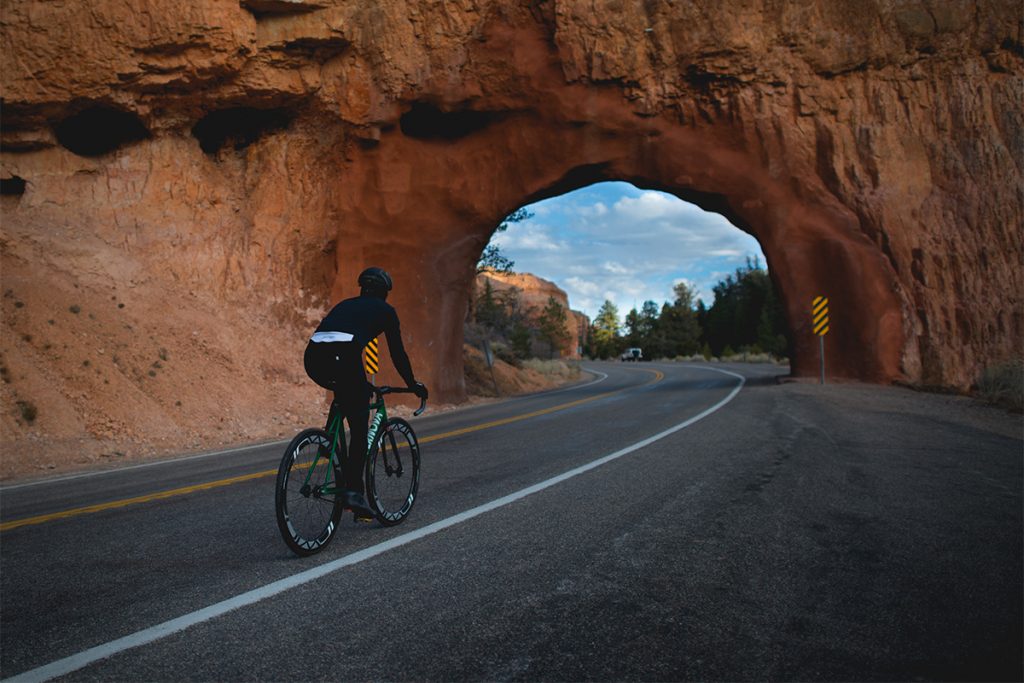
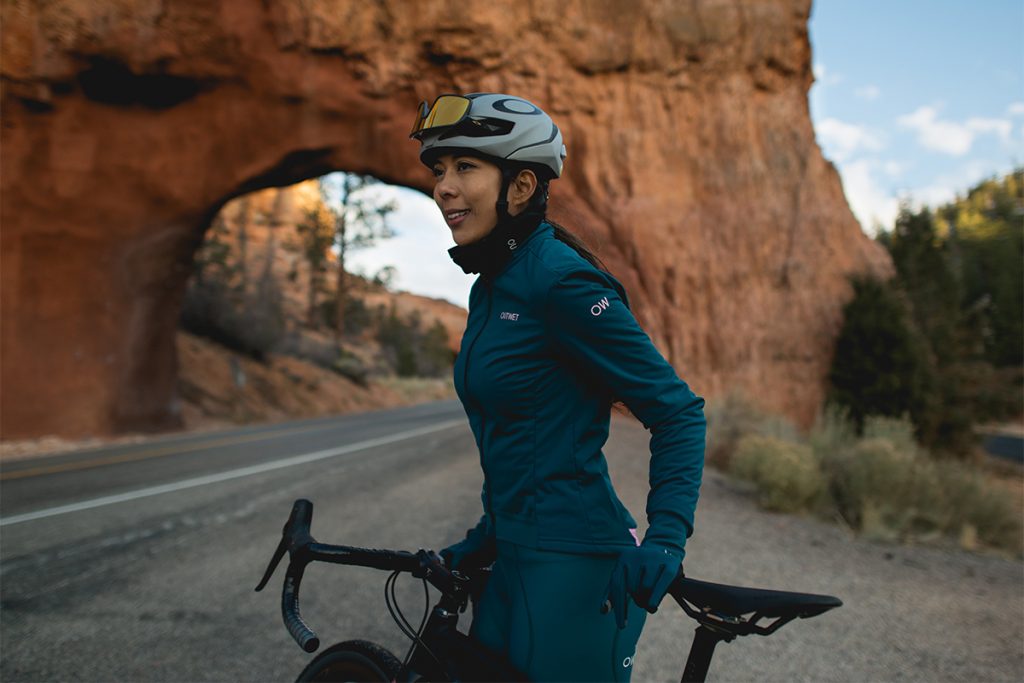
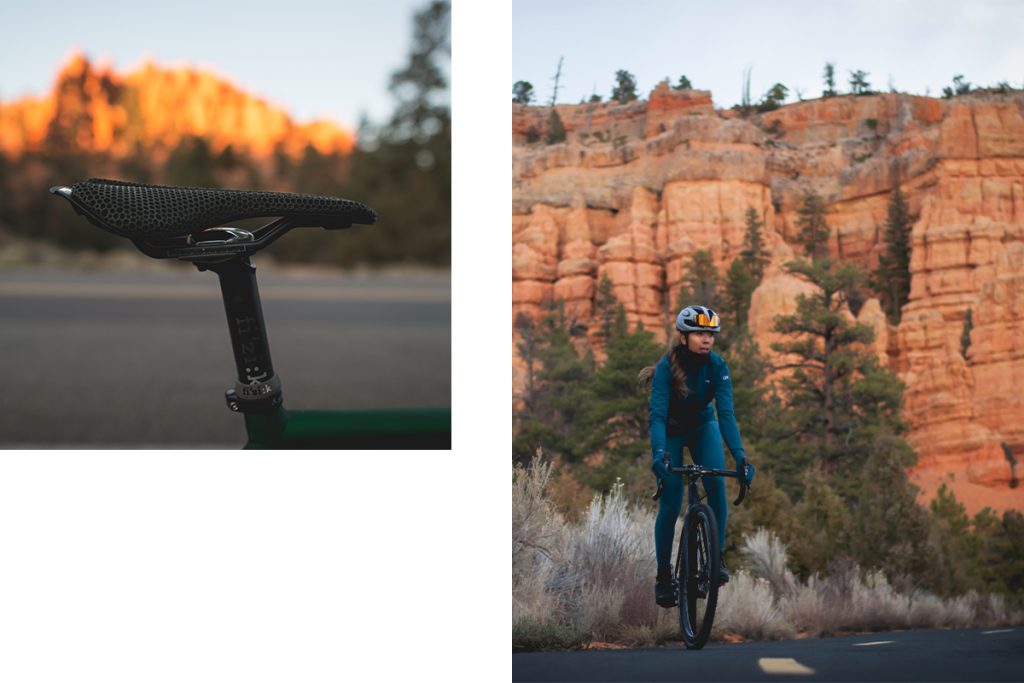
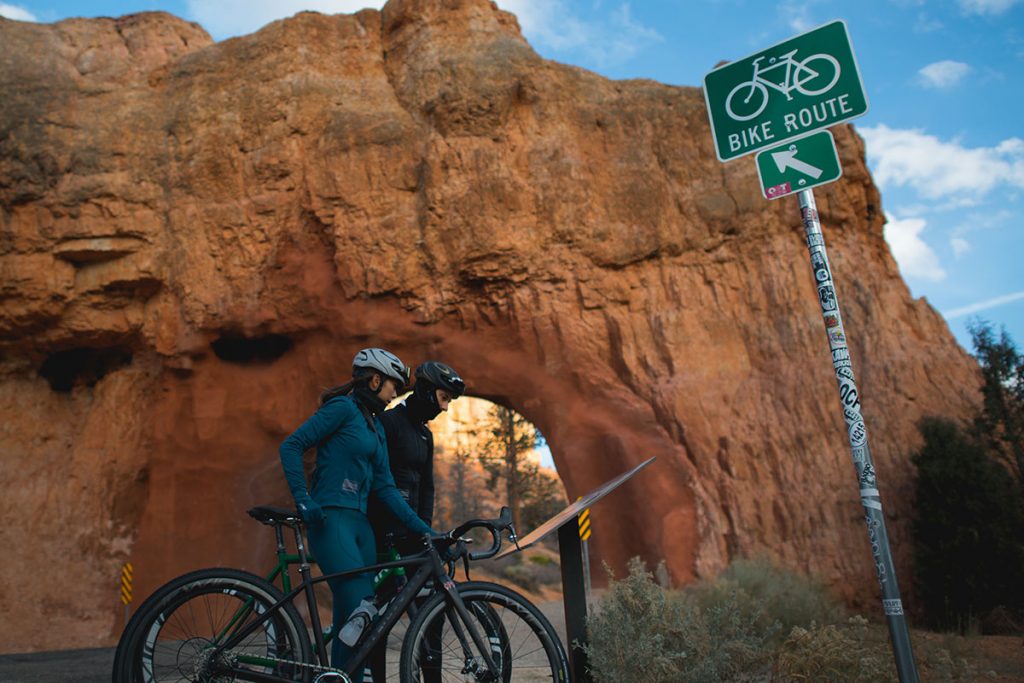
WHERE DO YOU RIDE?

HOW DO YOU RIDE?
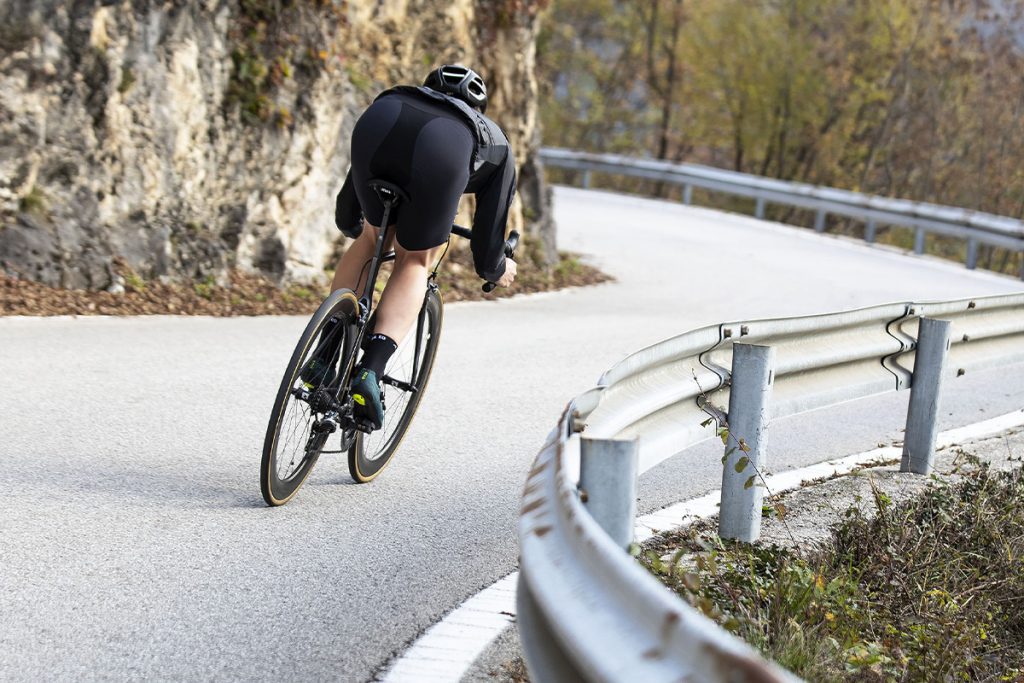
WHAT DO YOU RIDE ?


